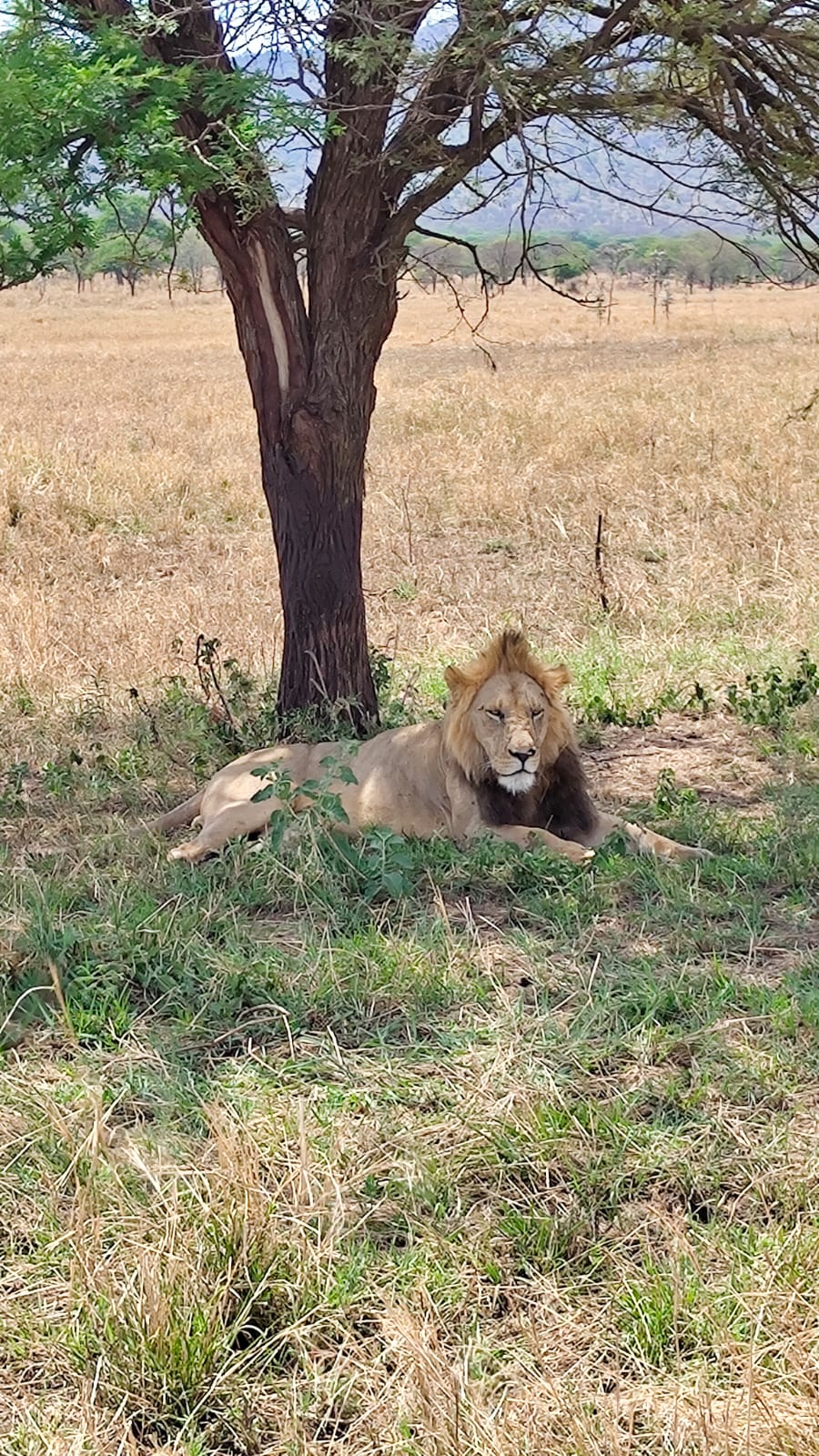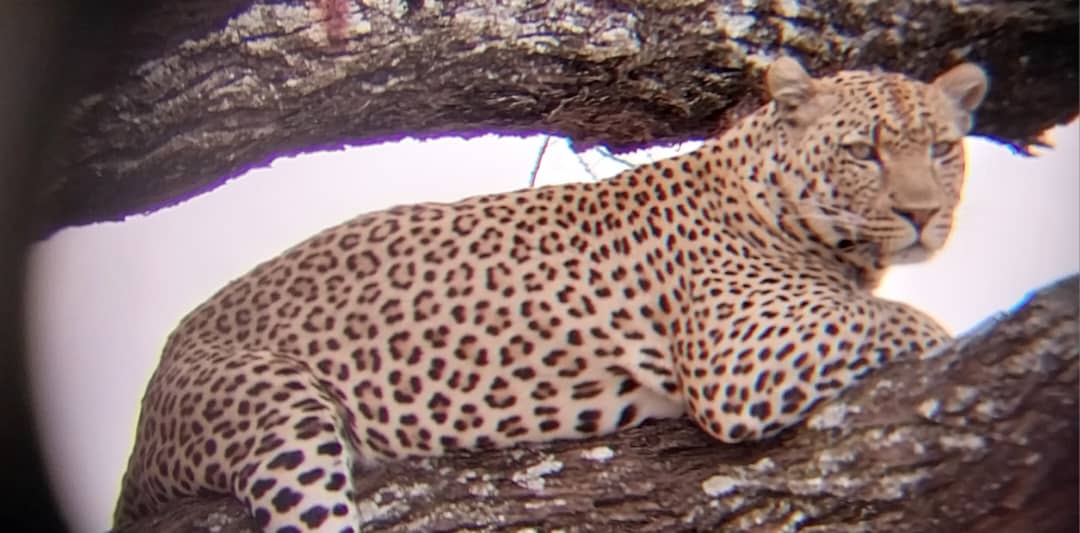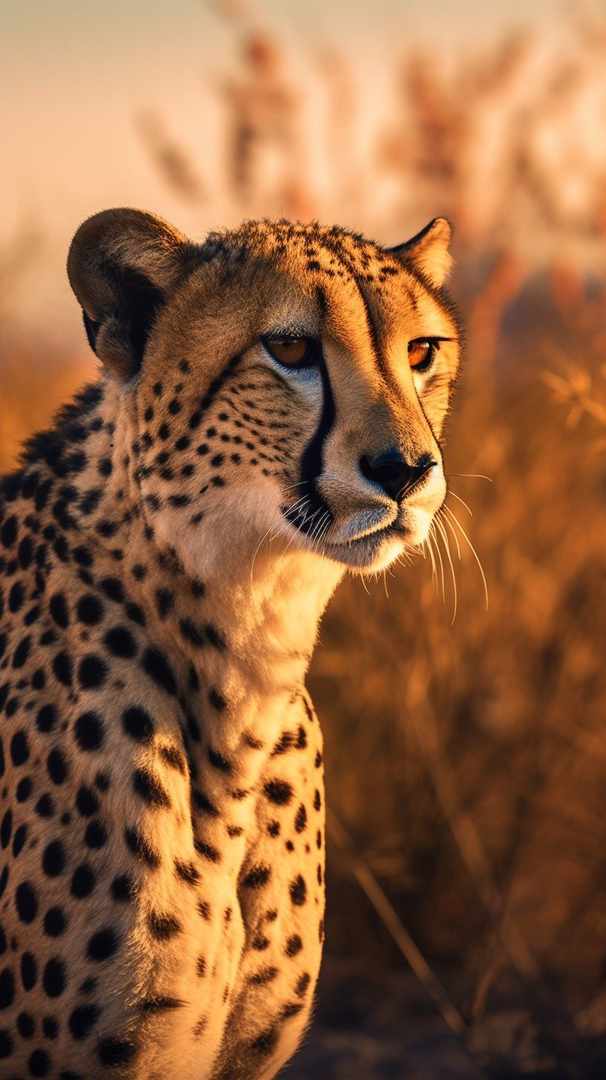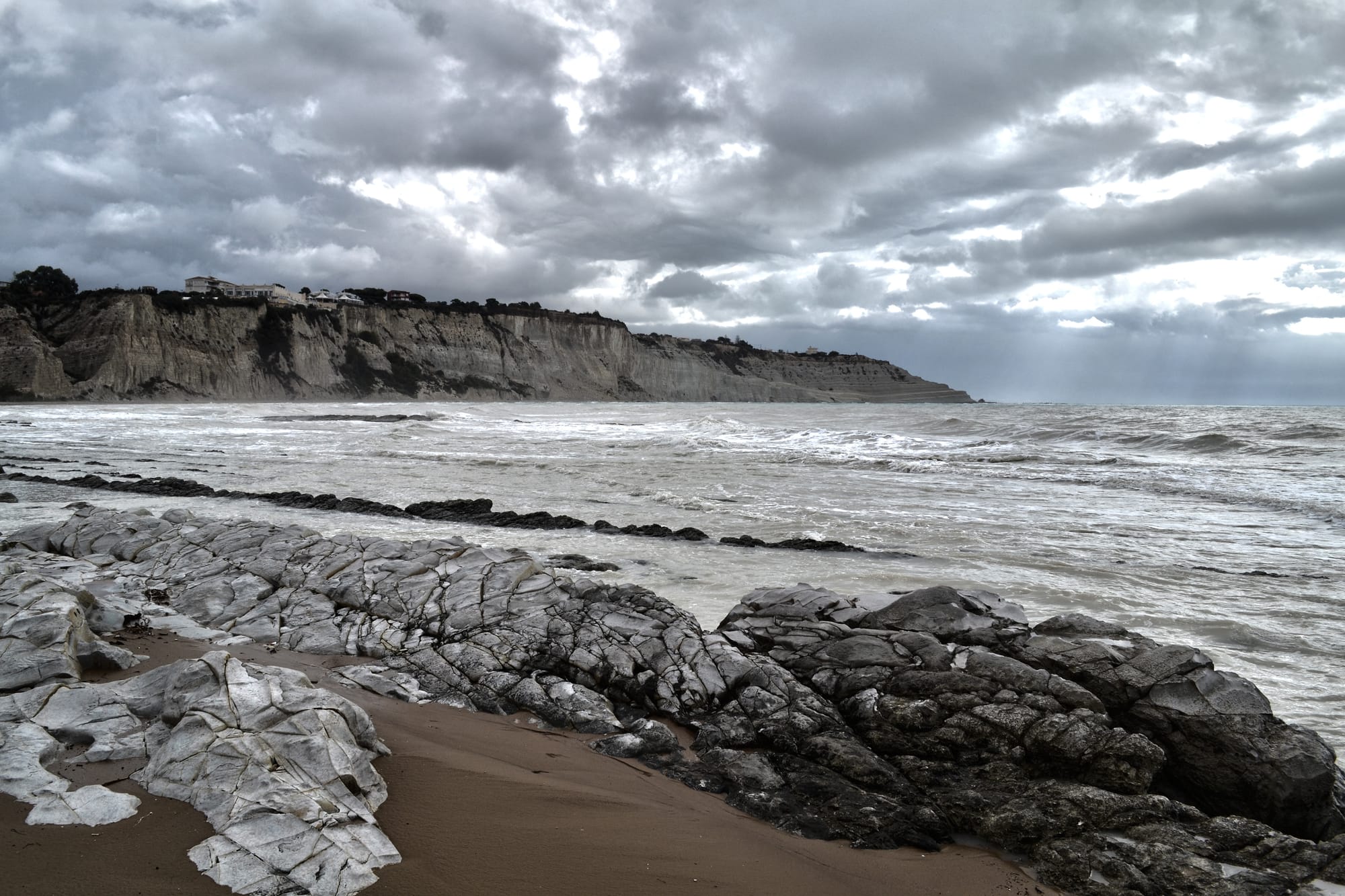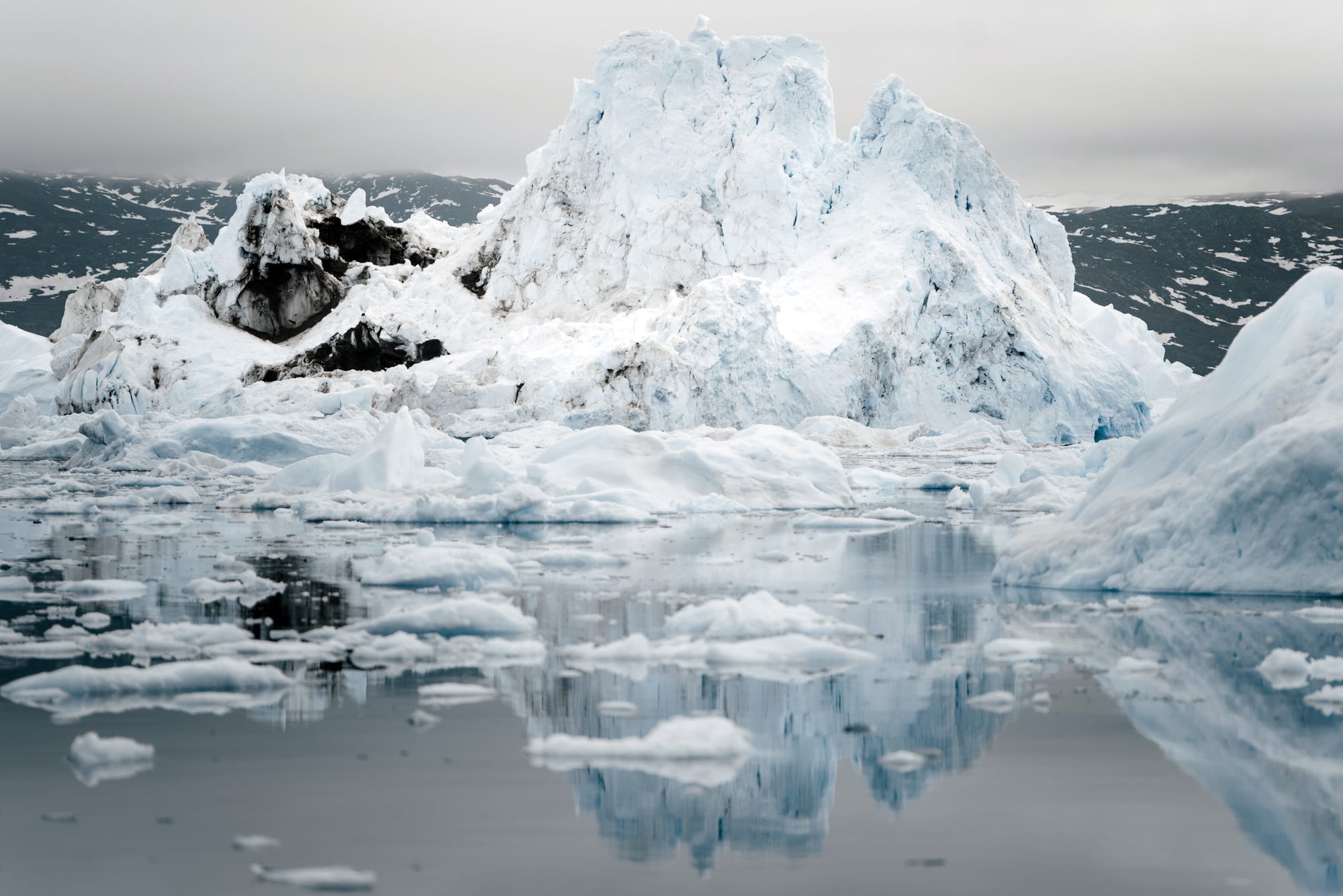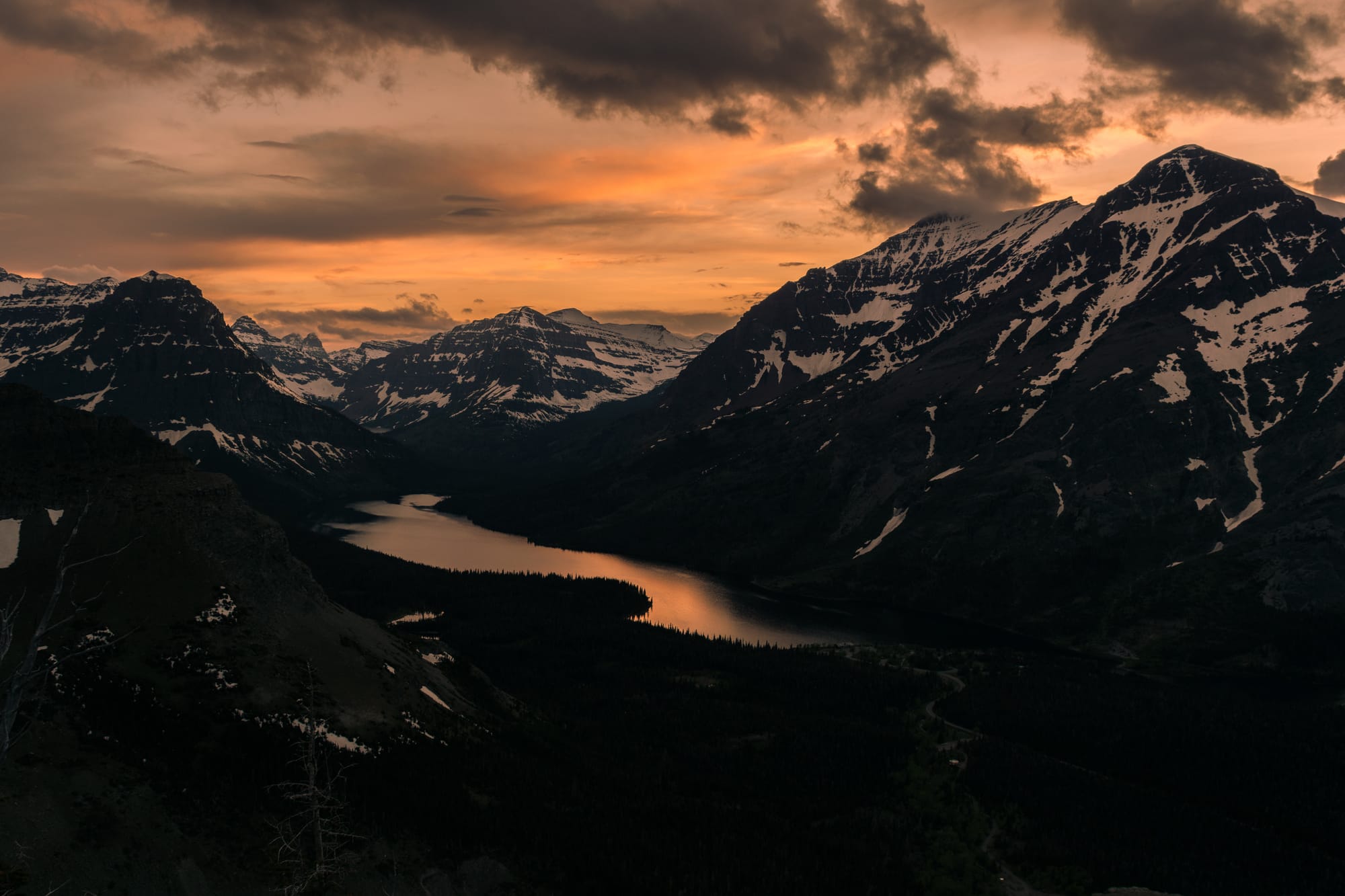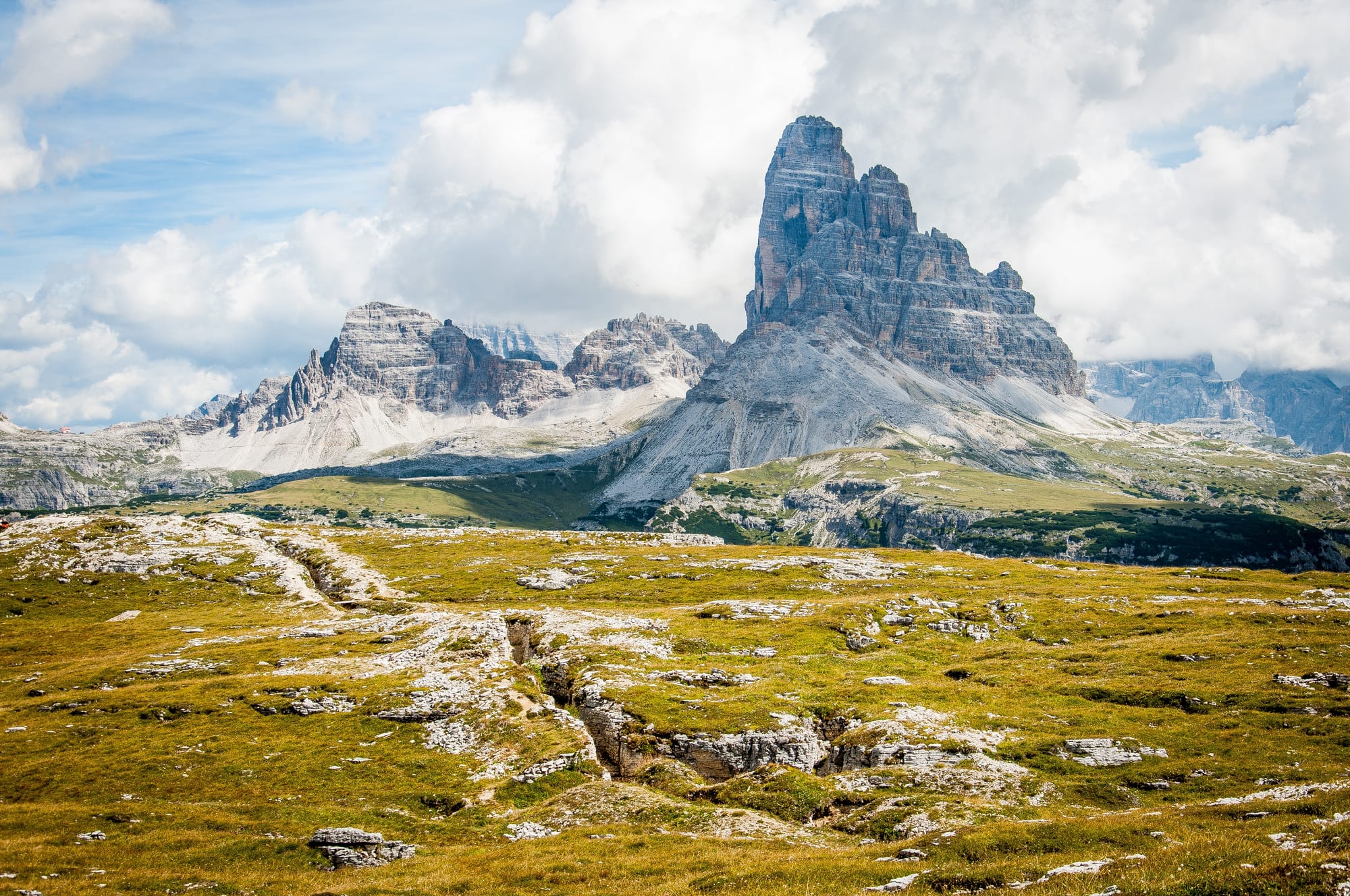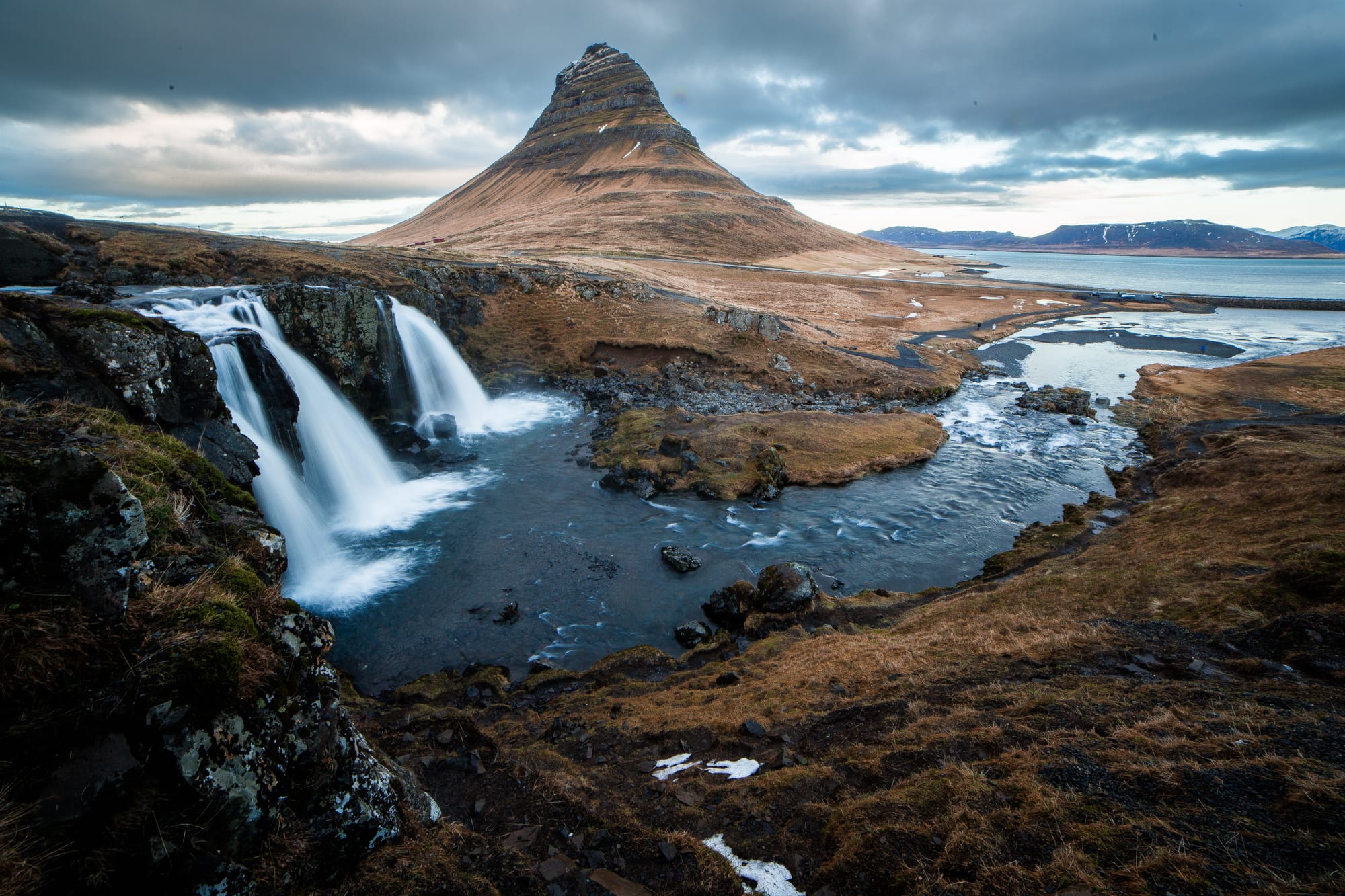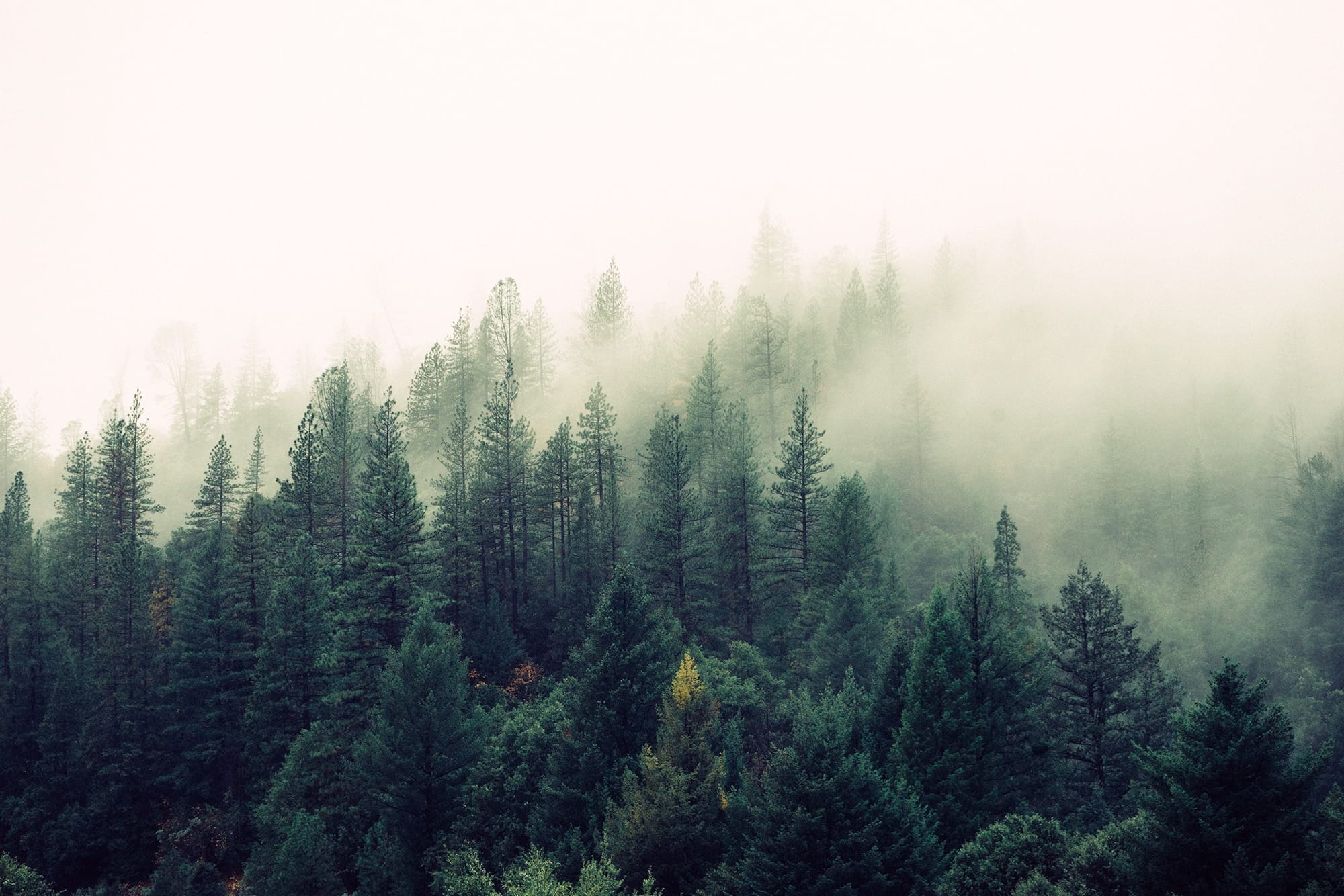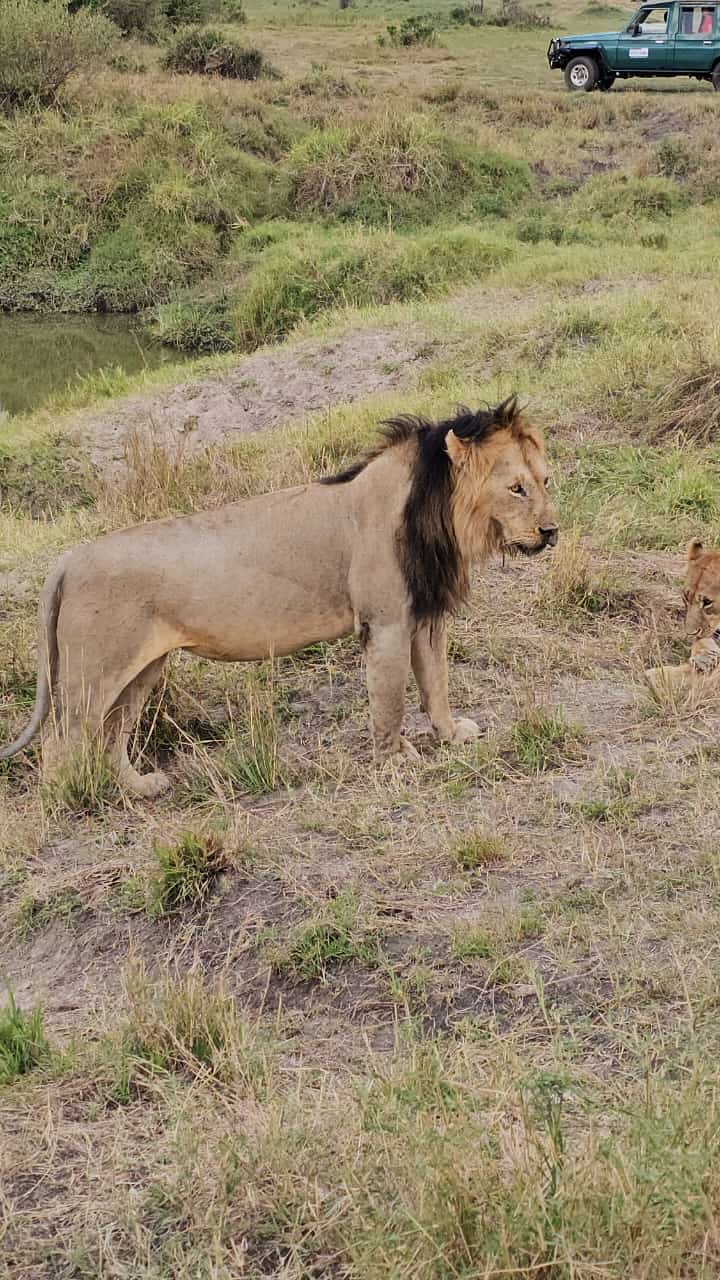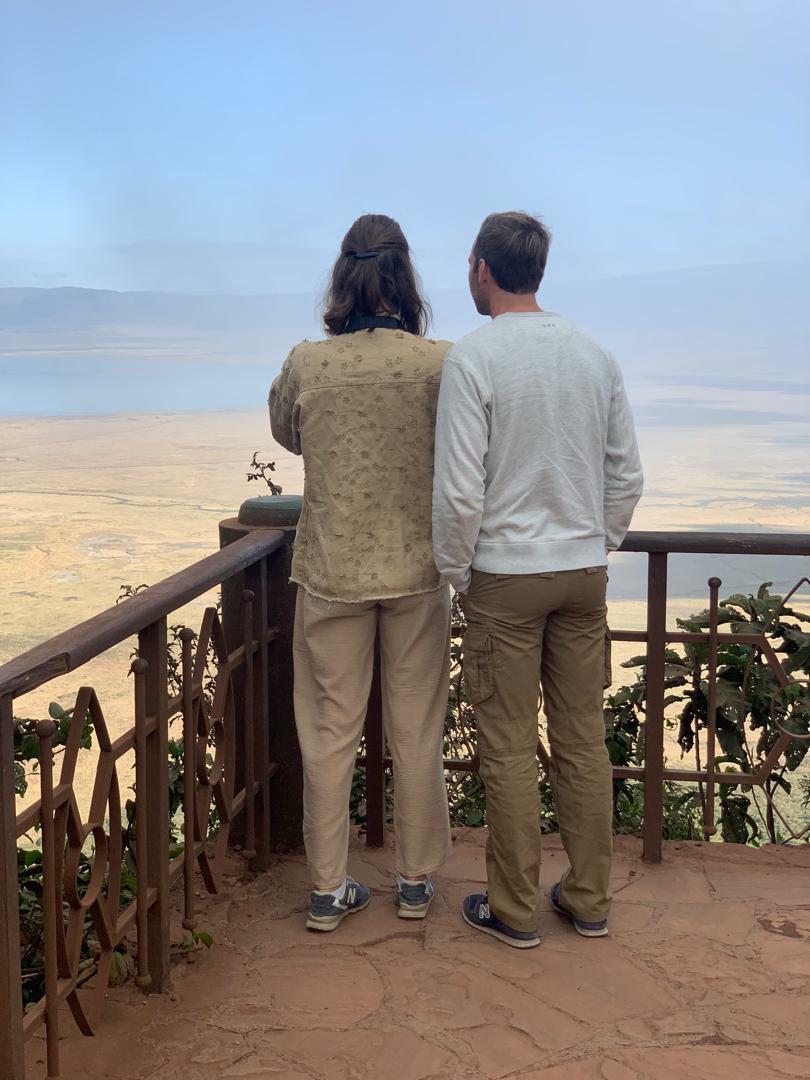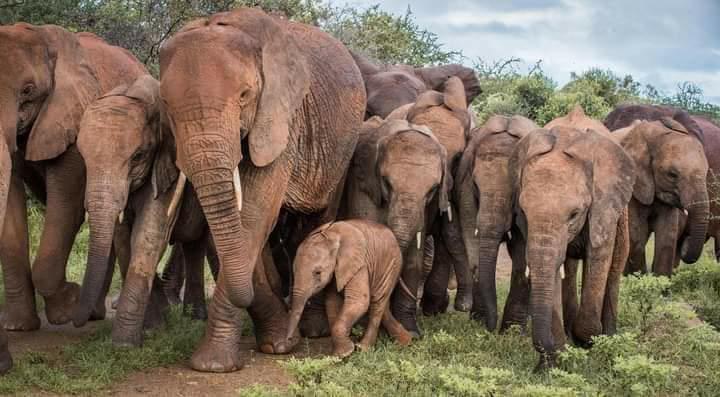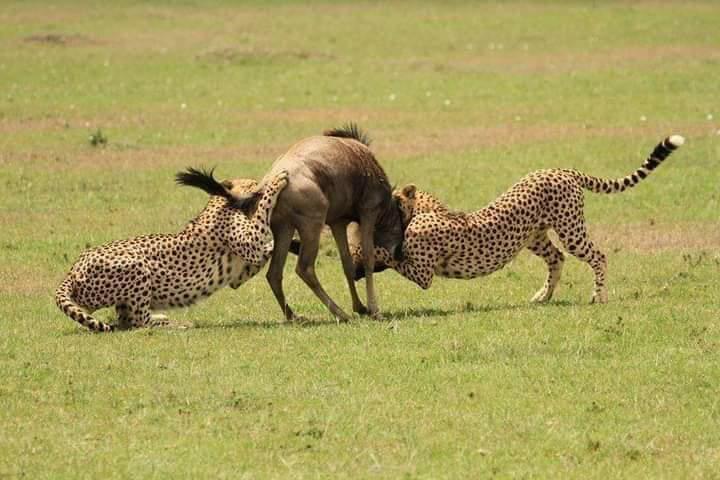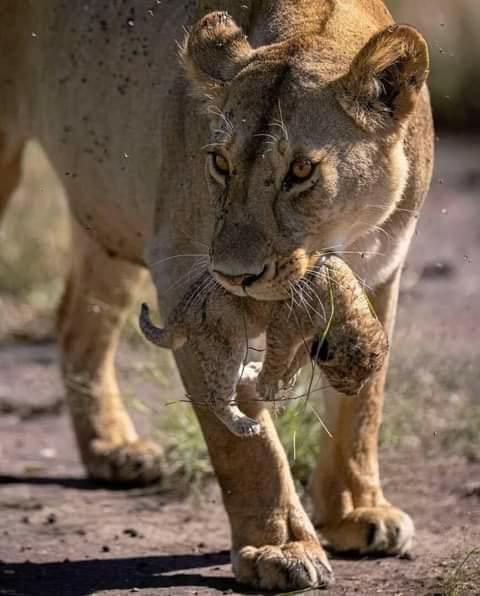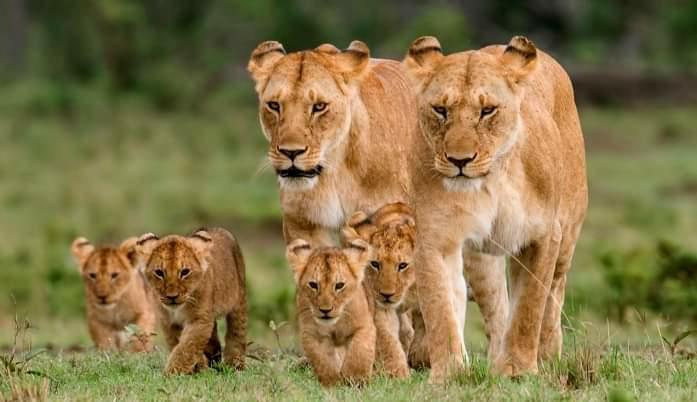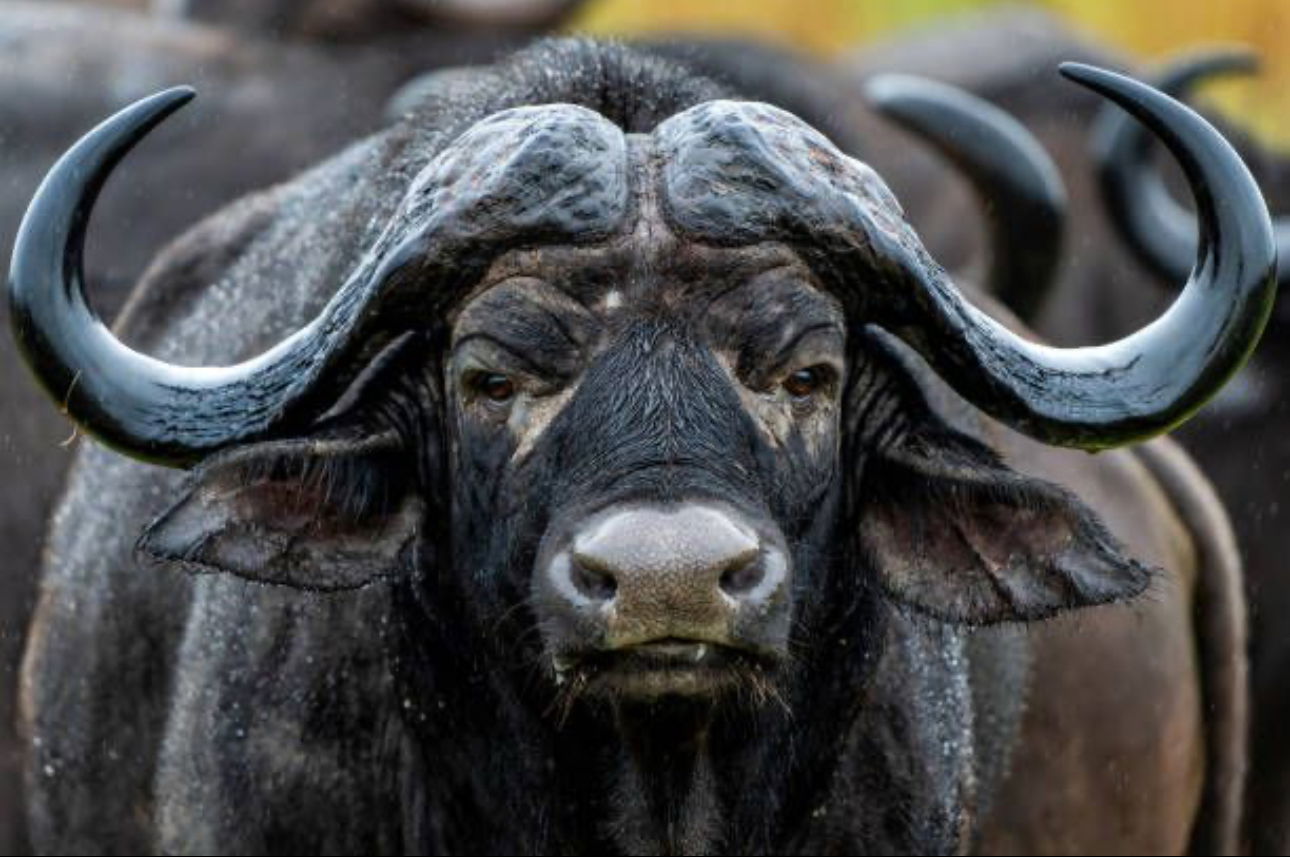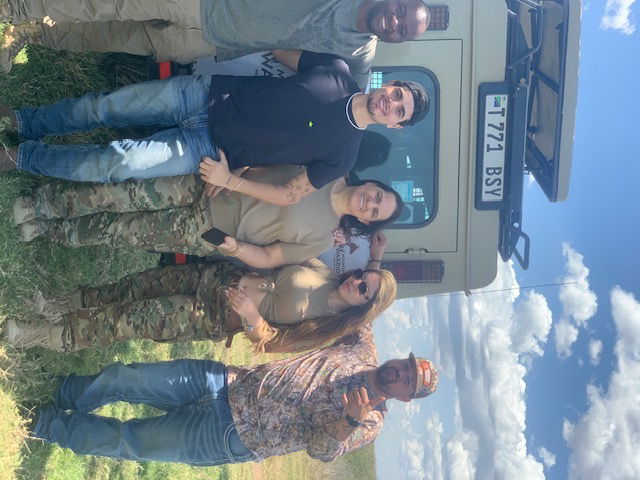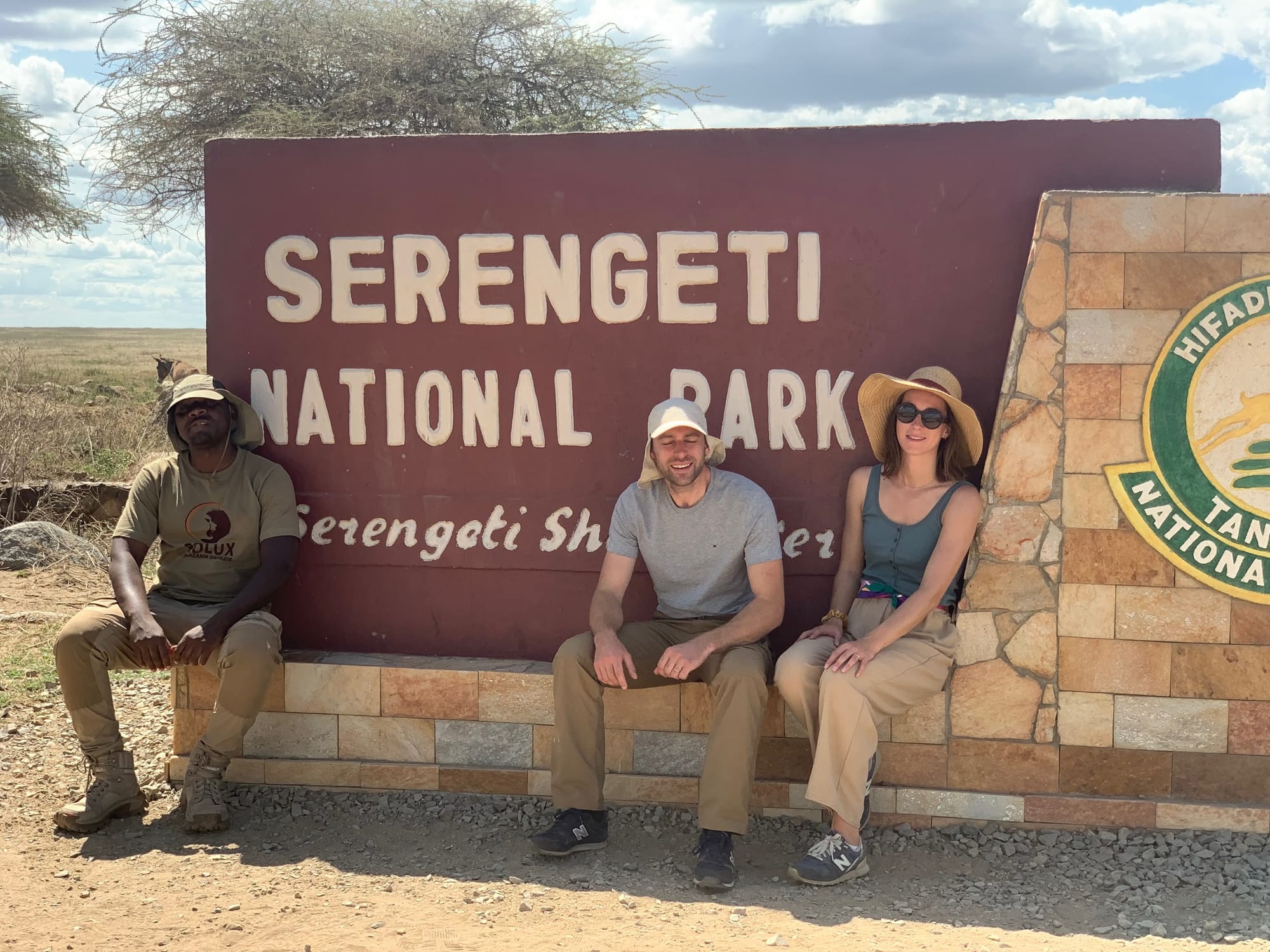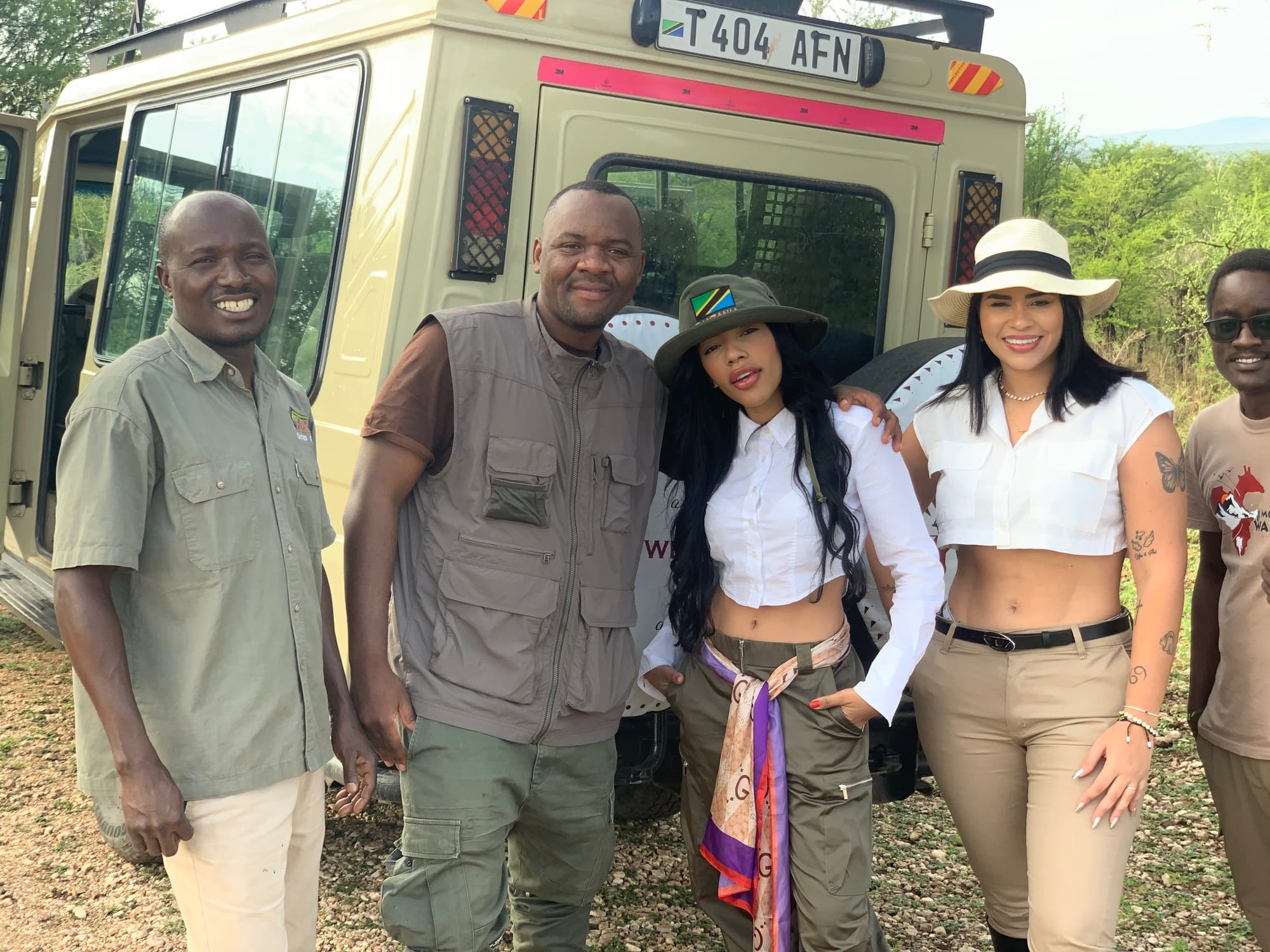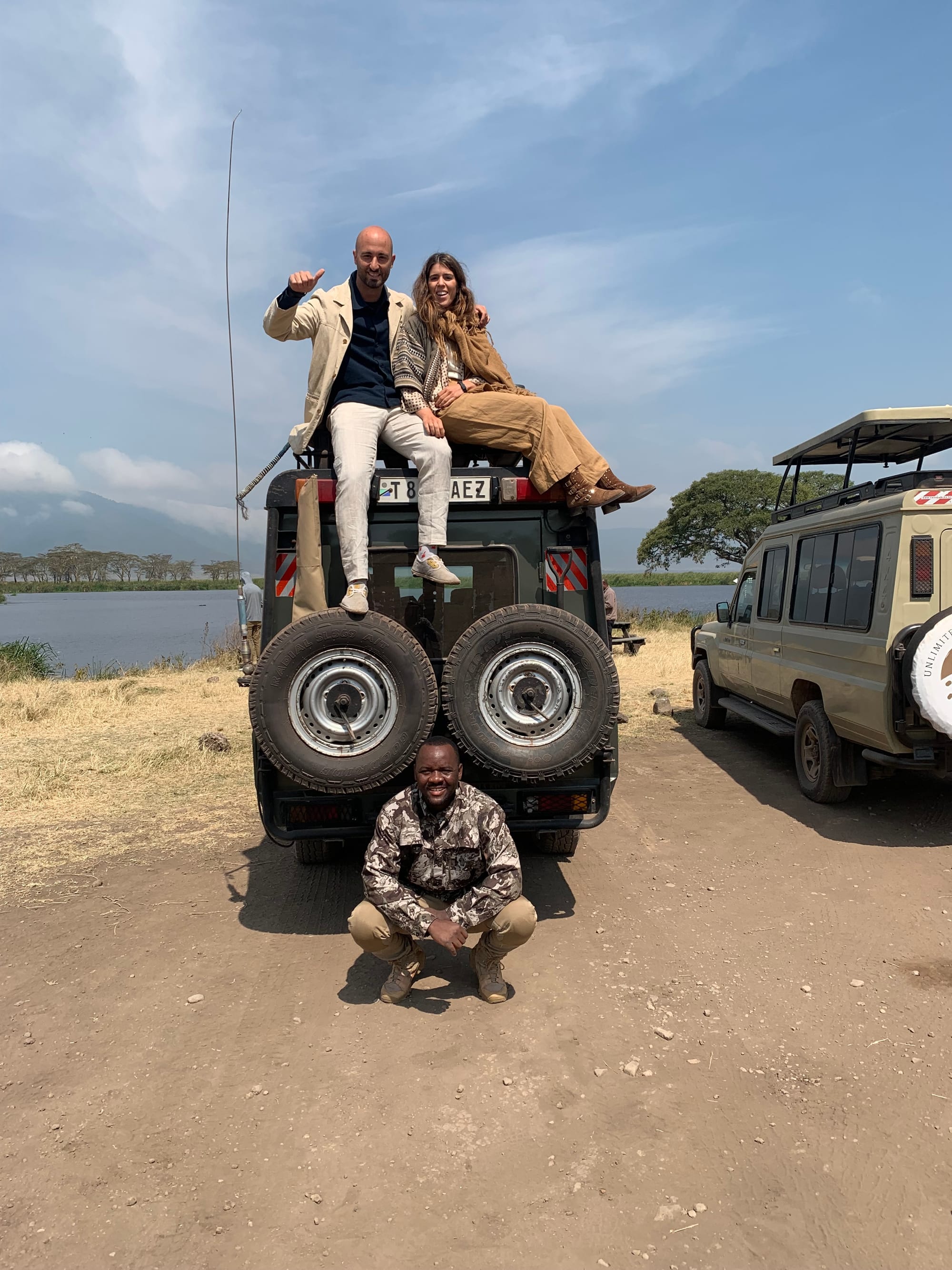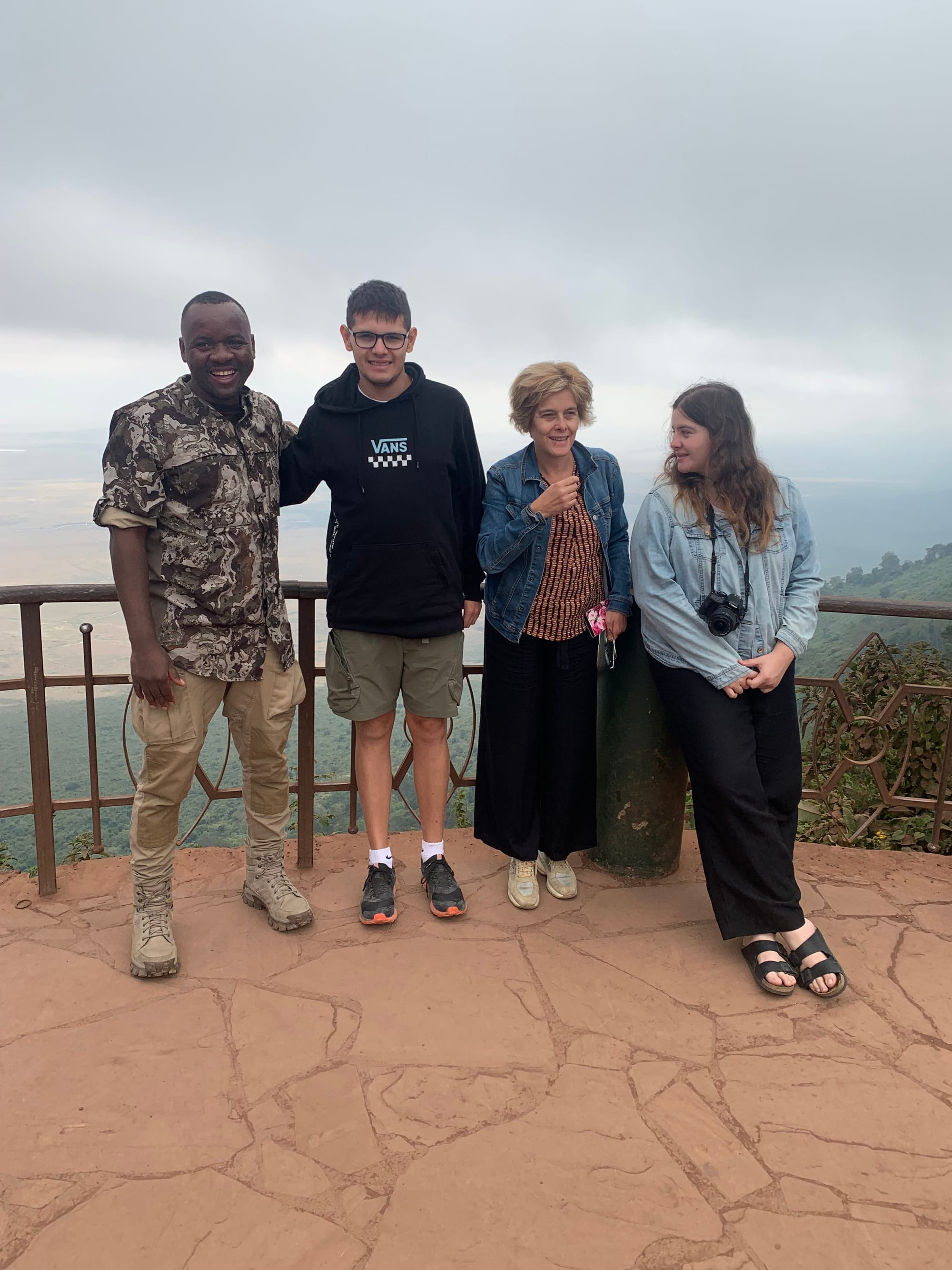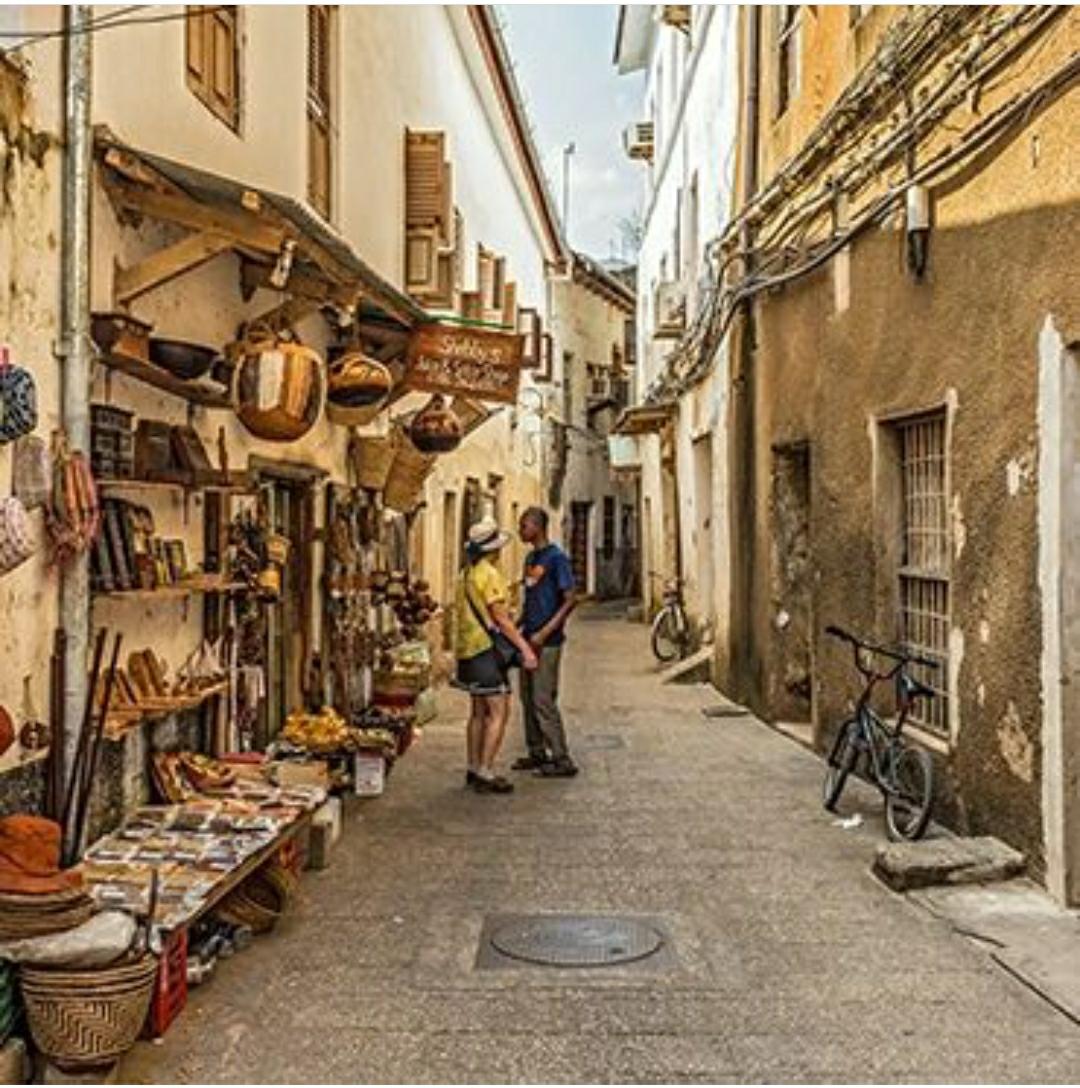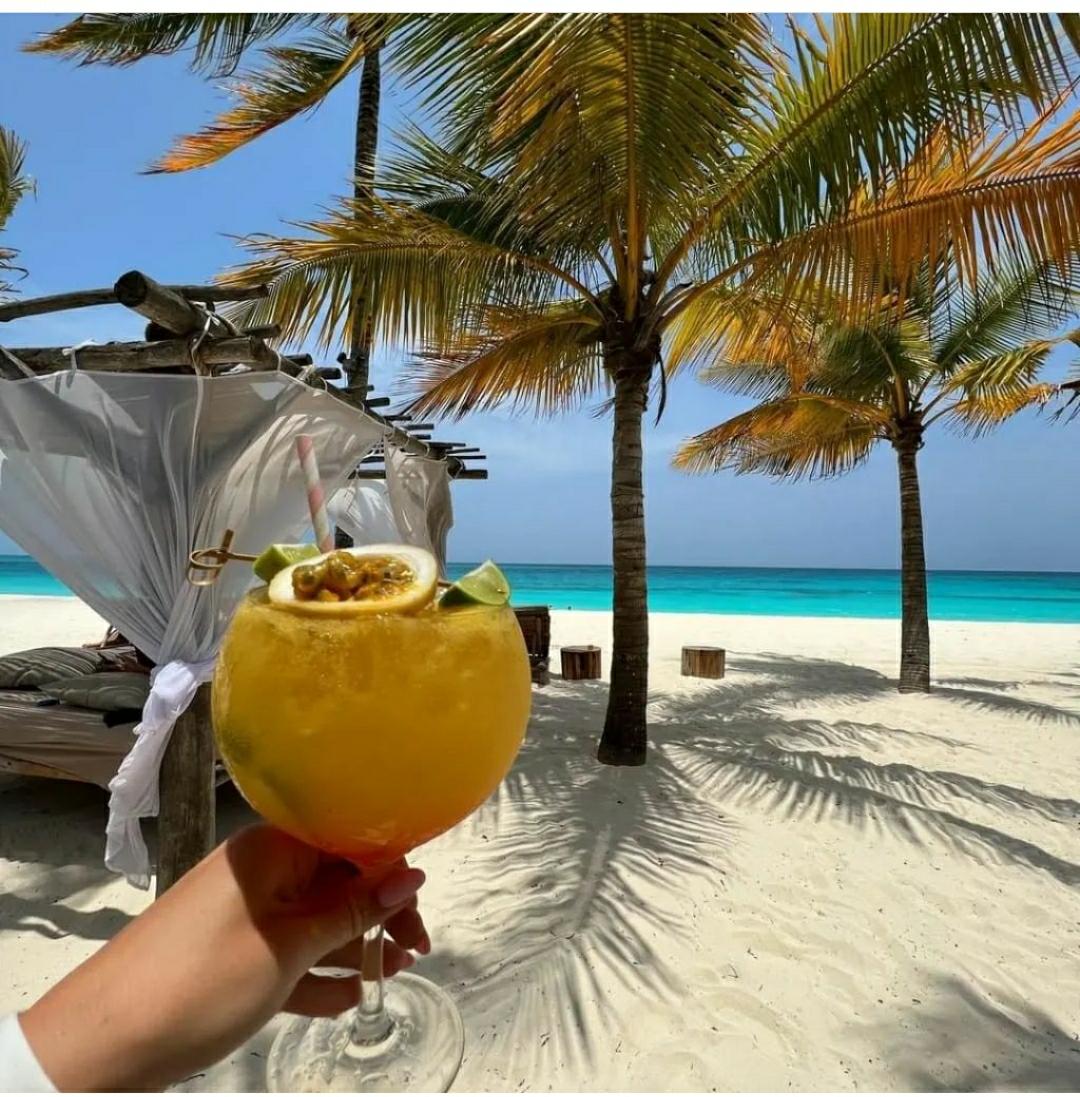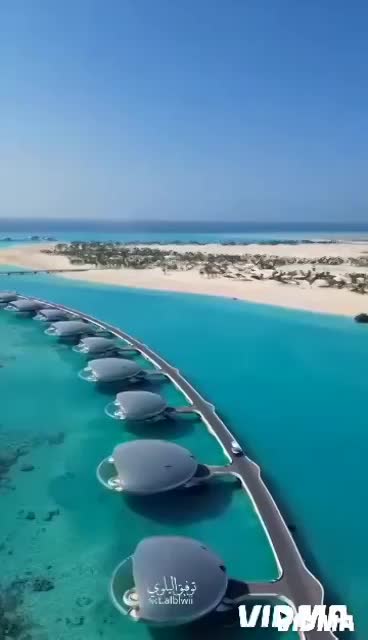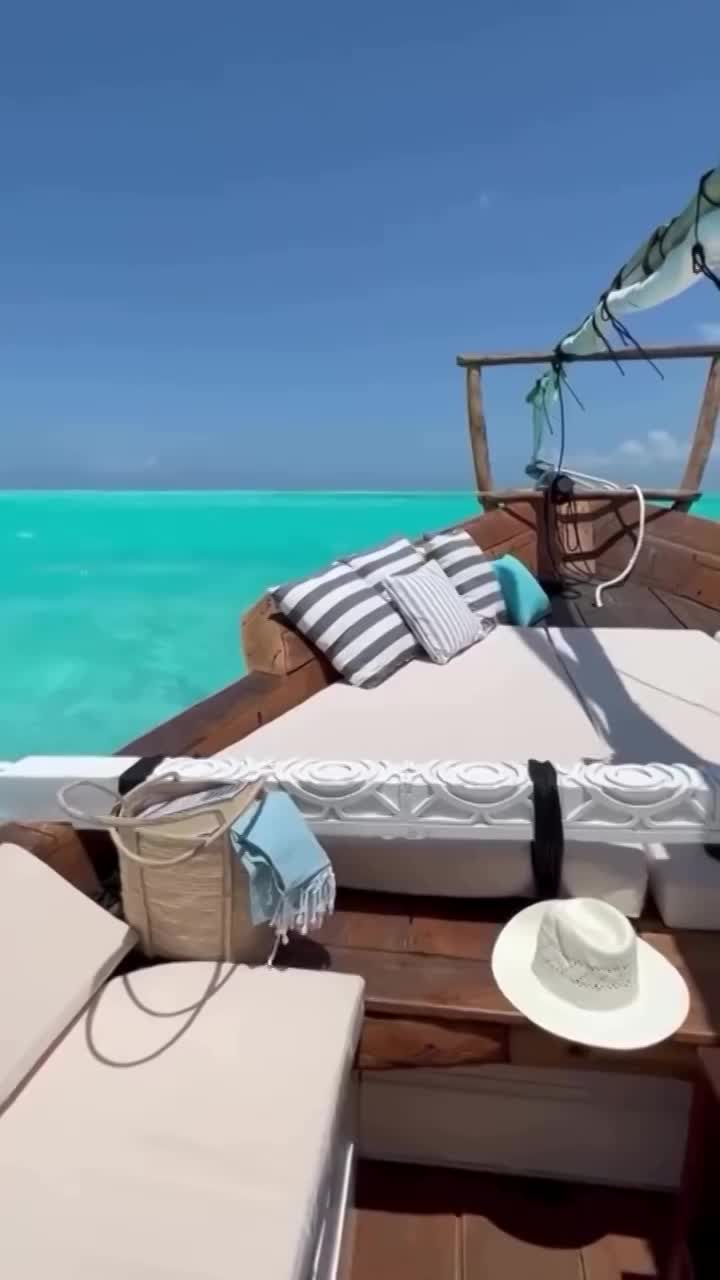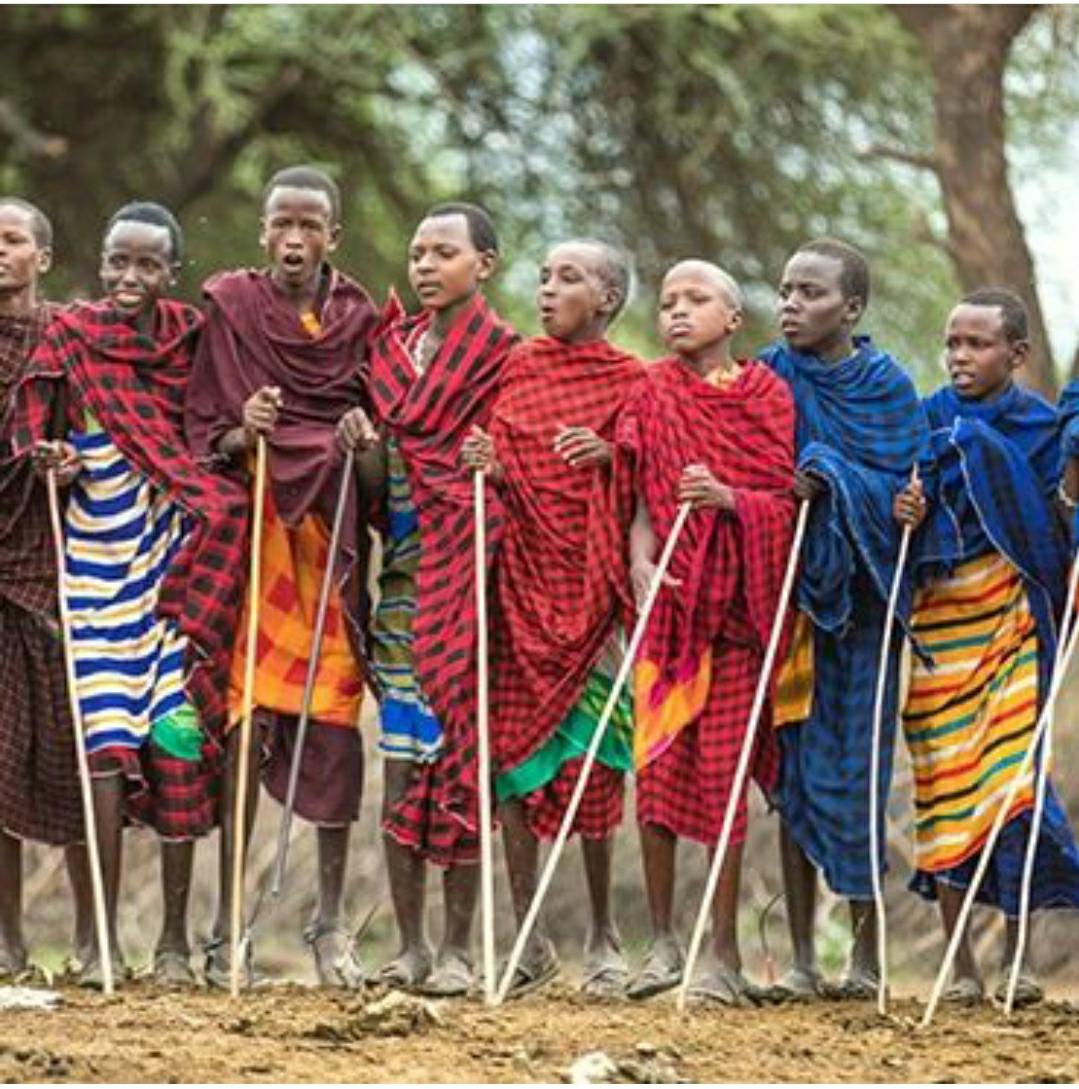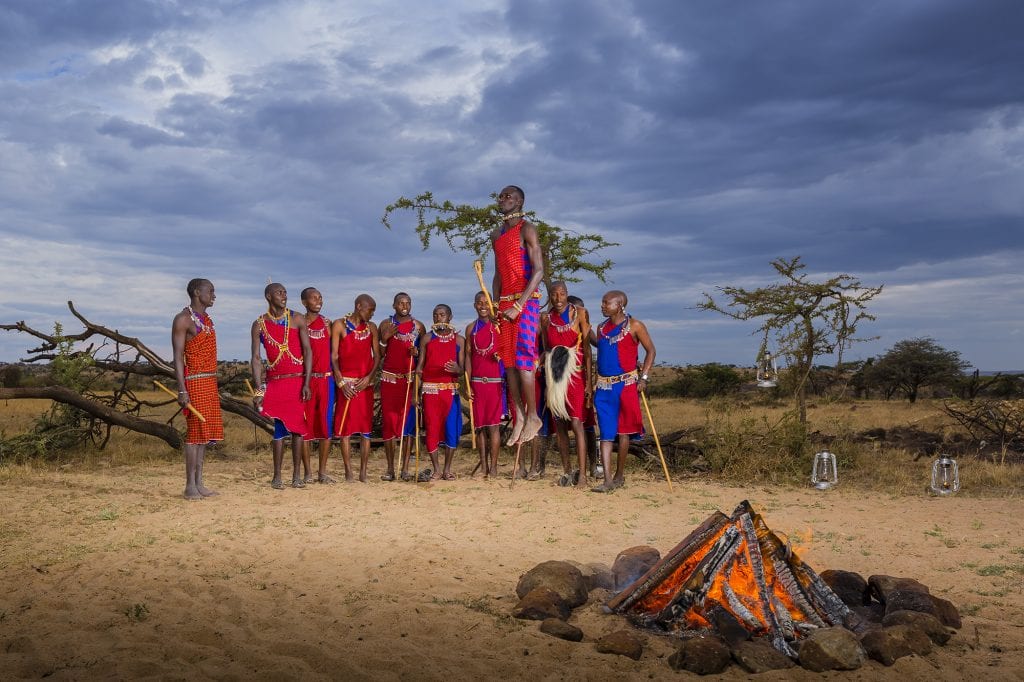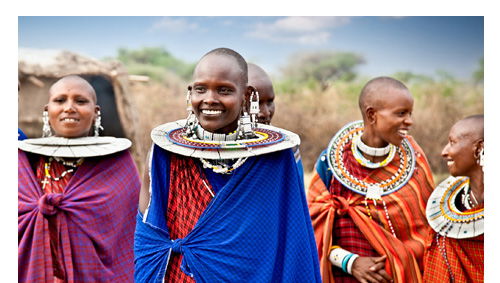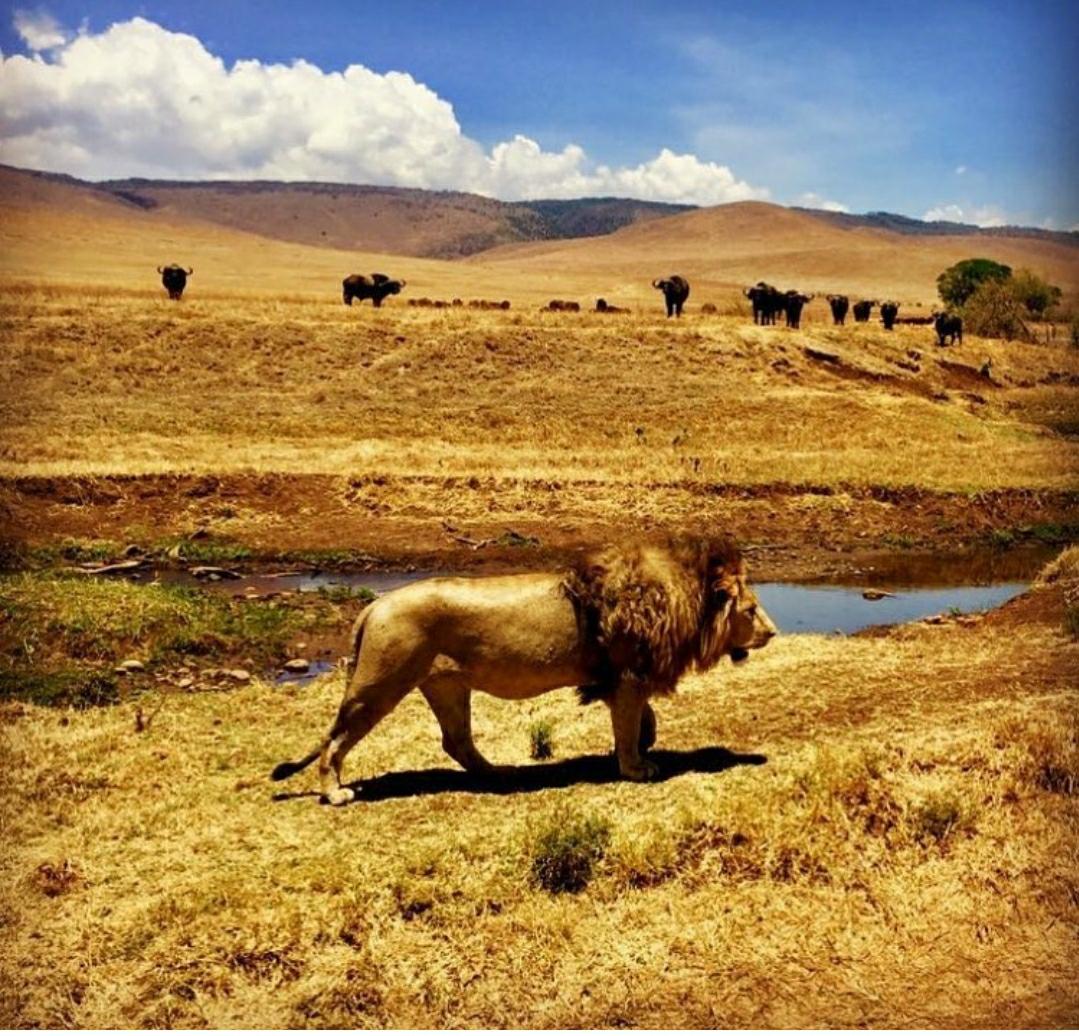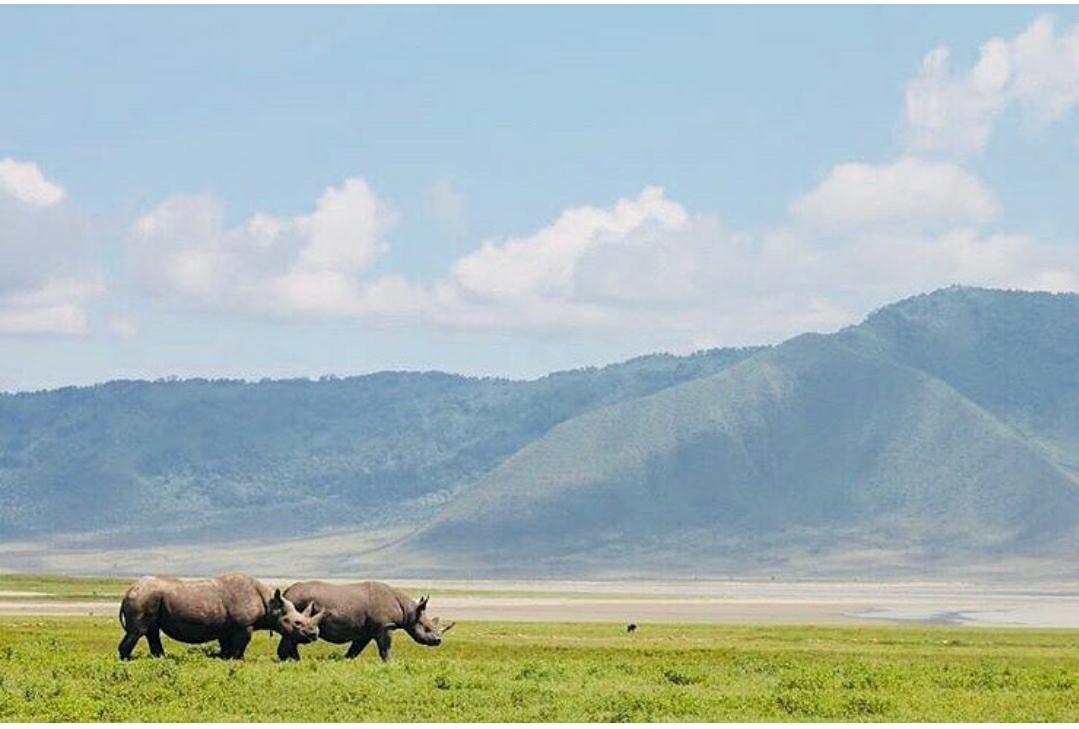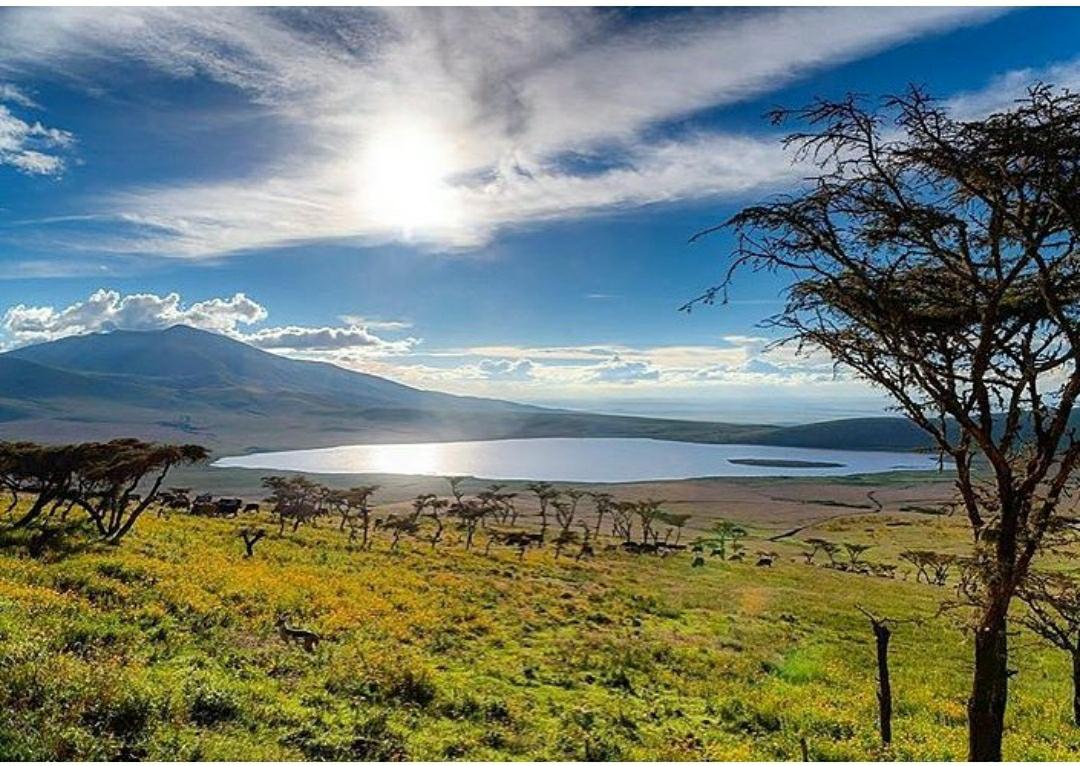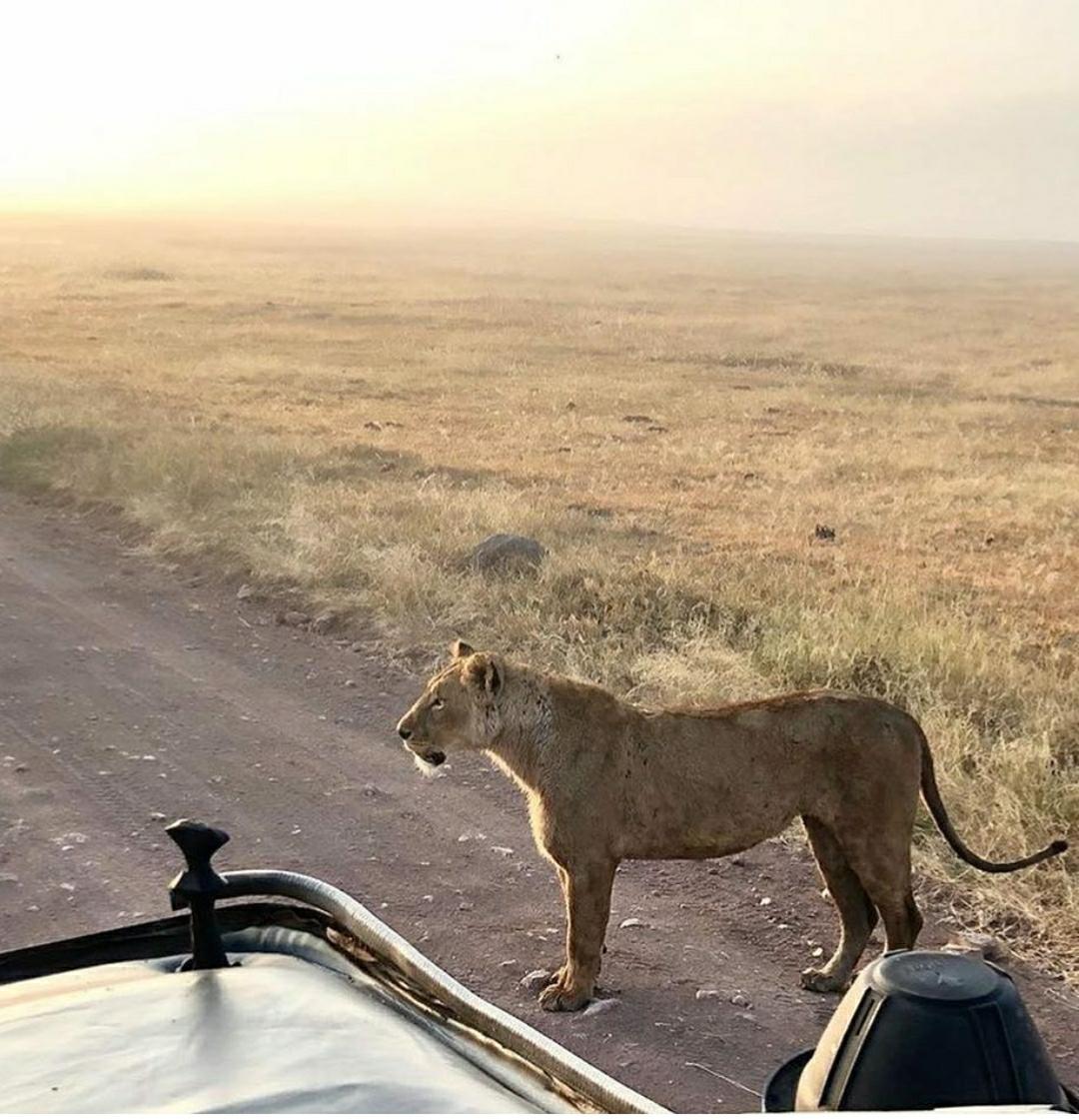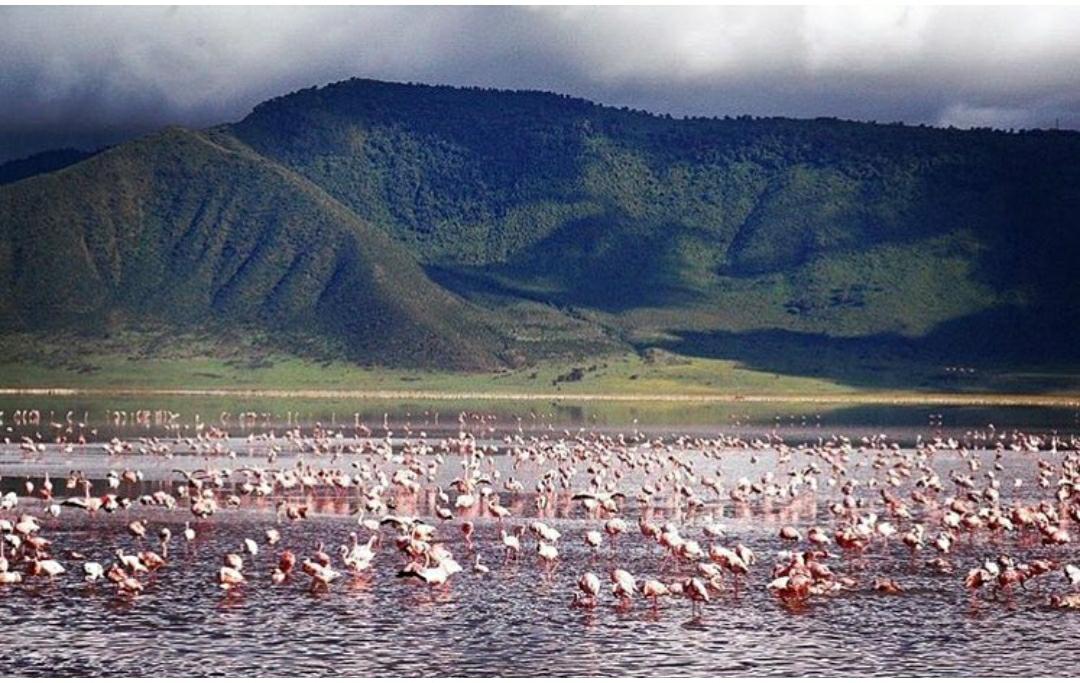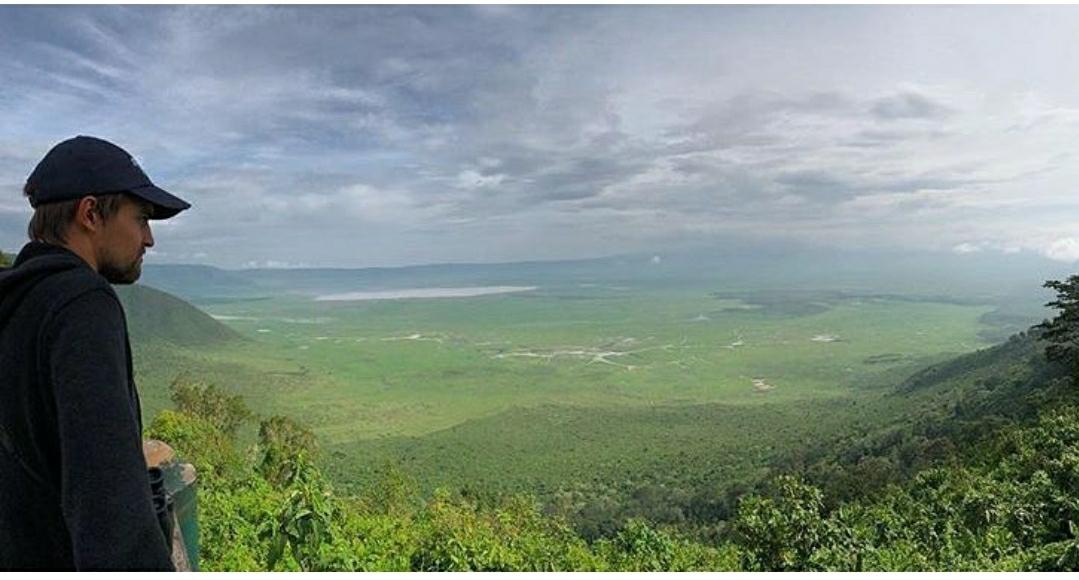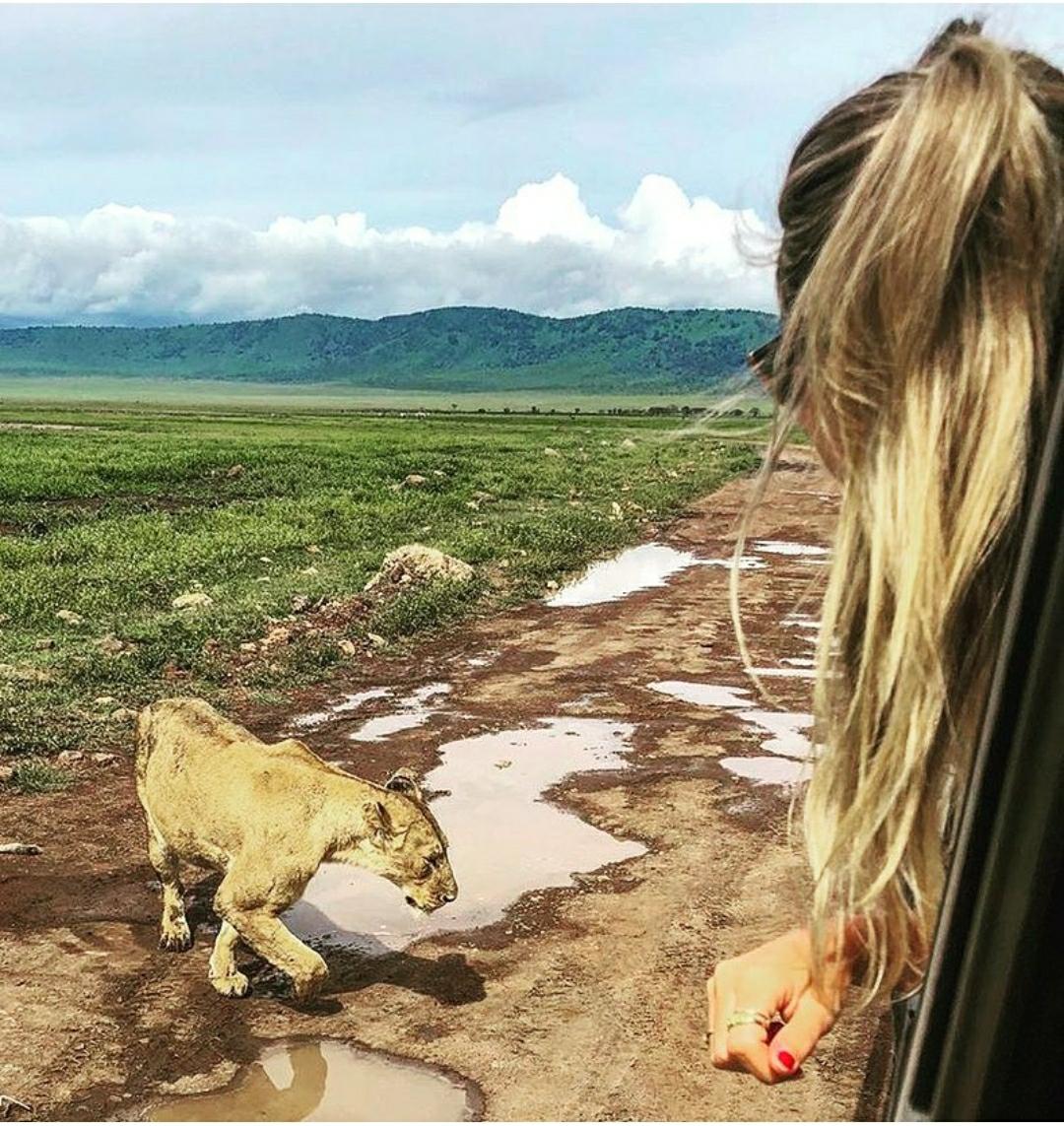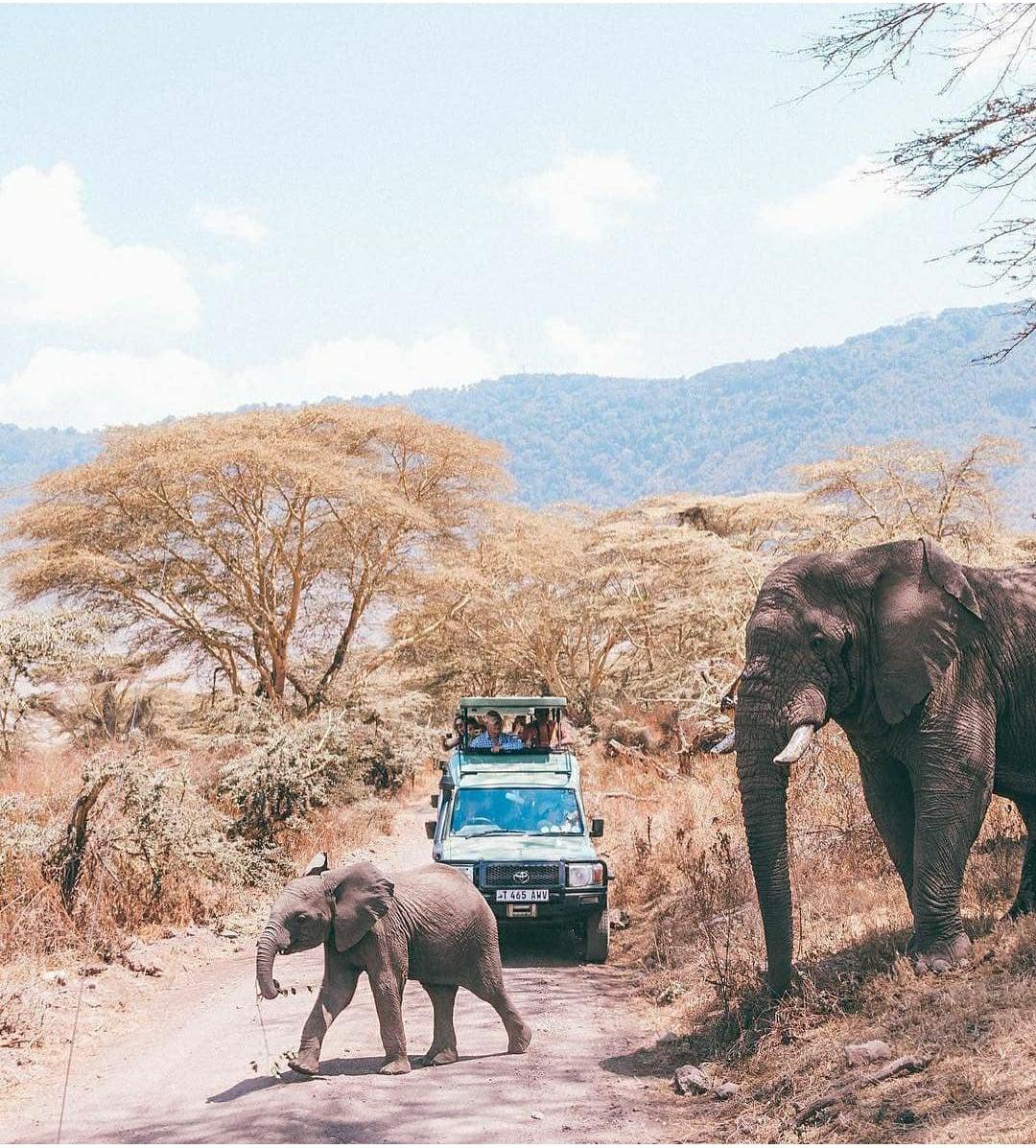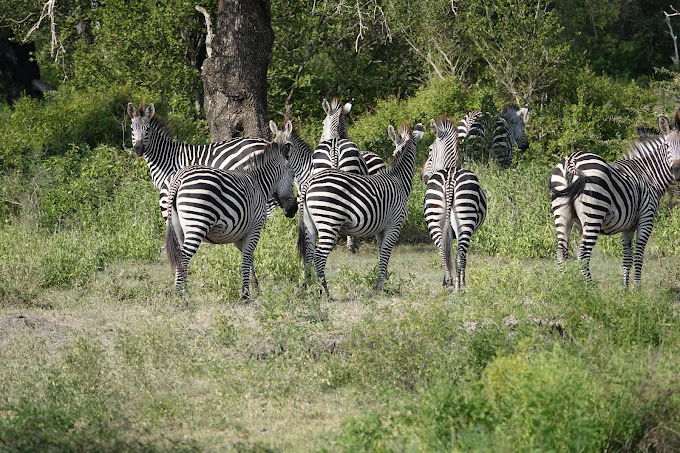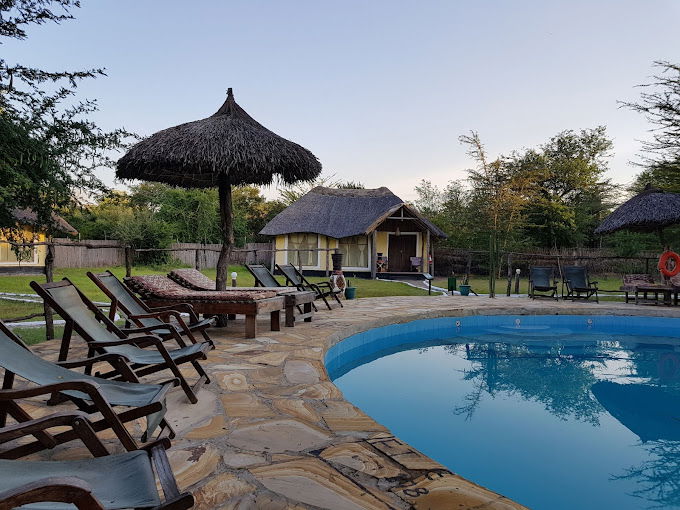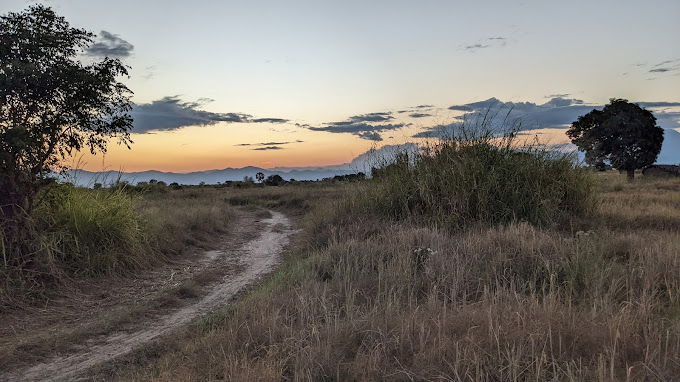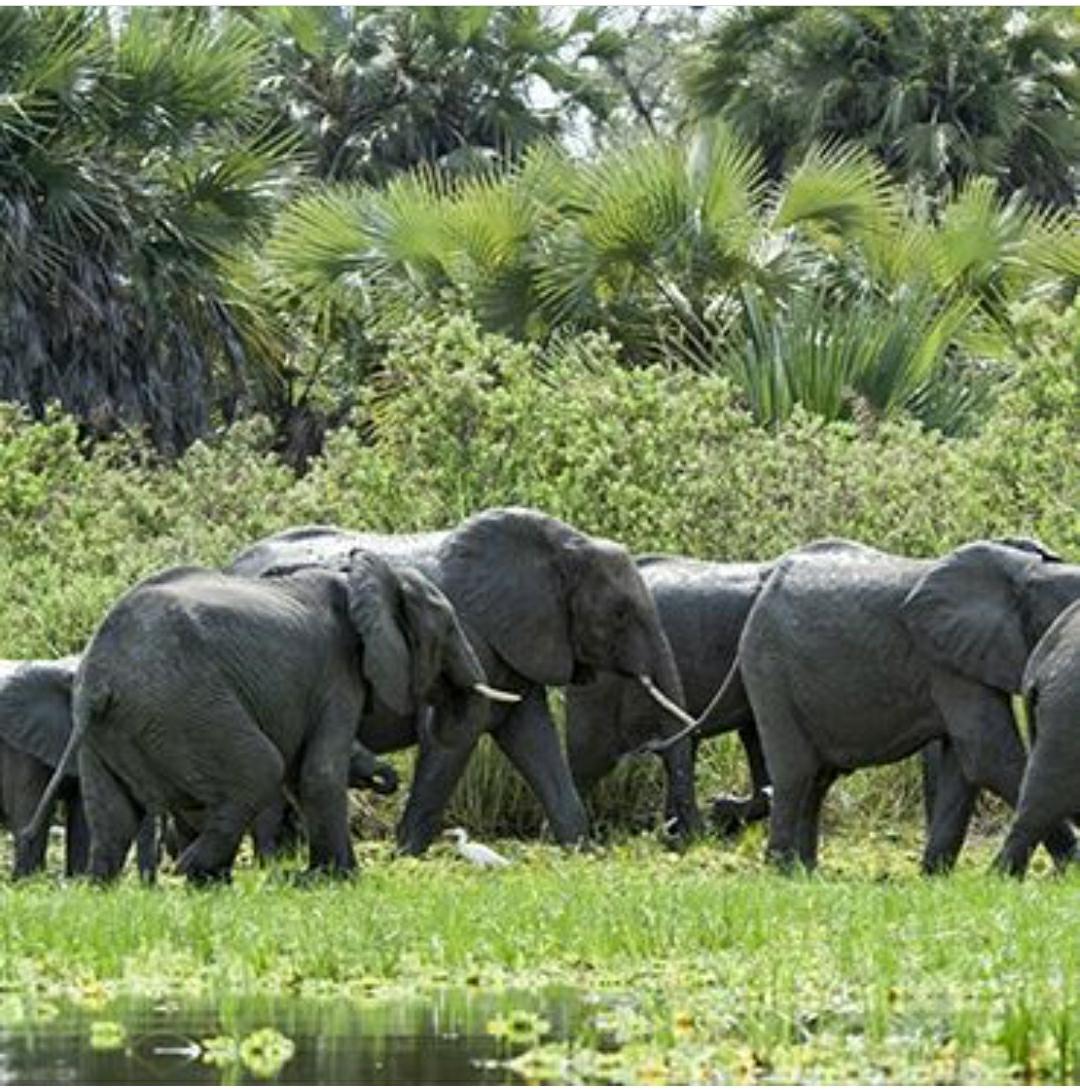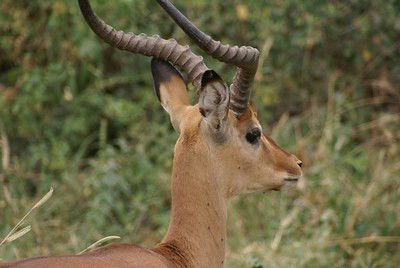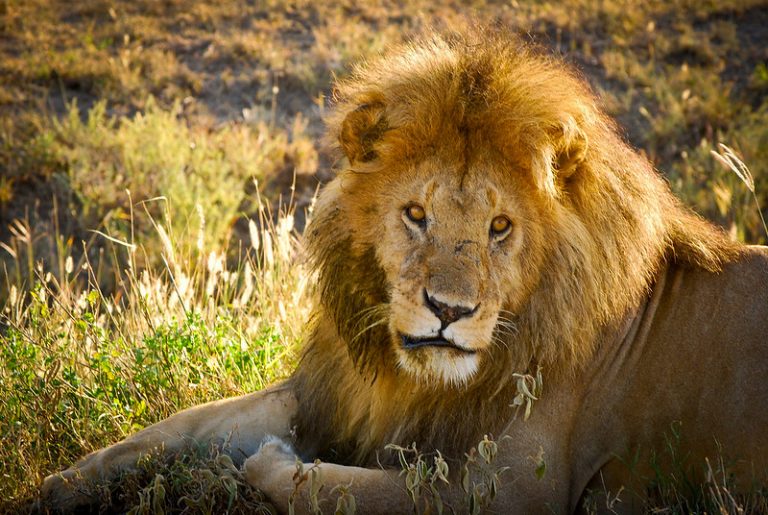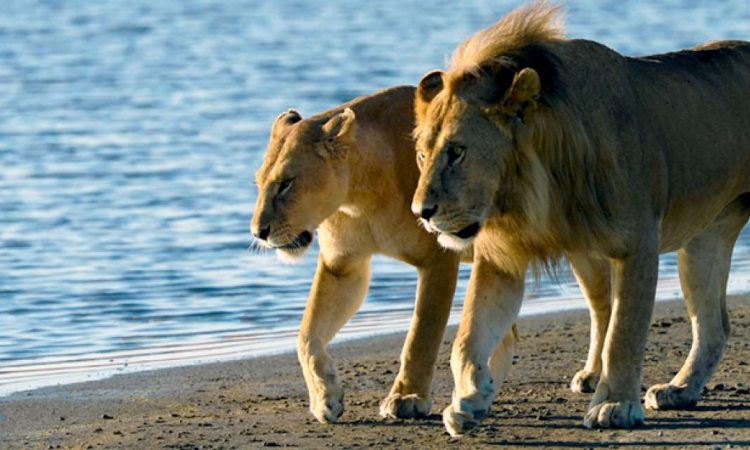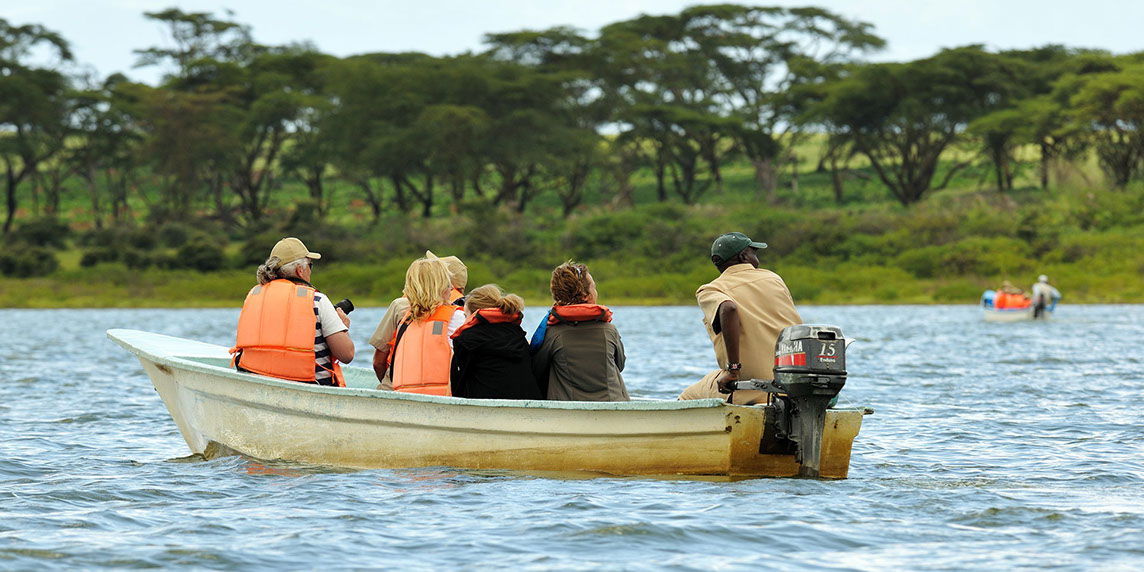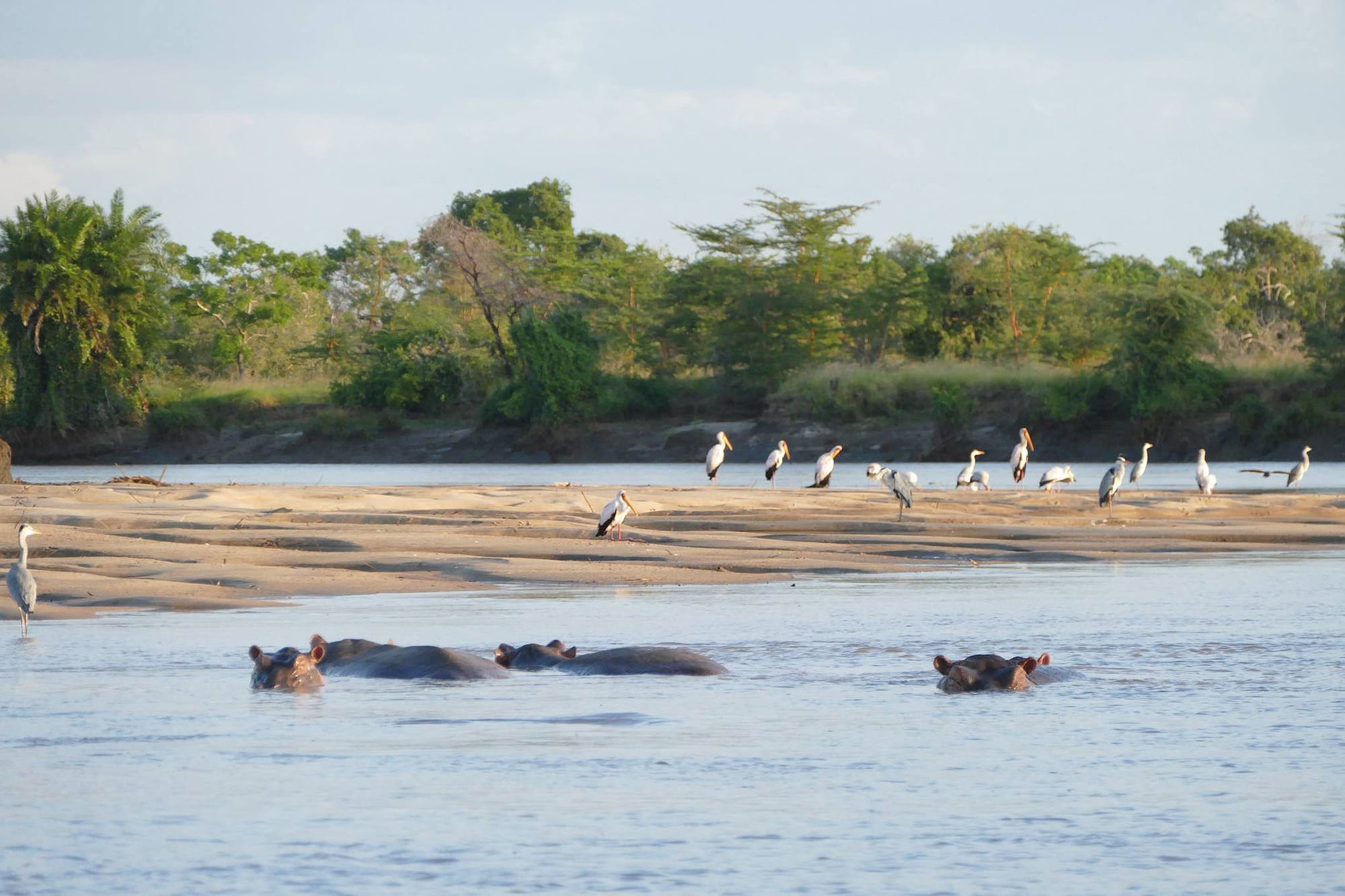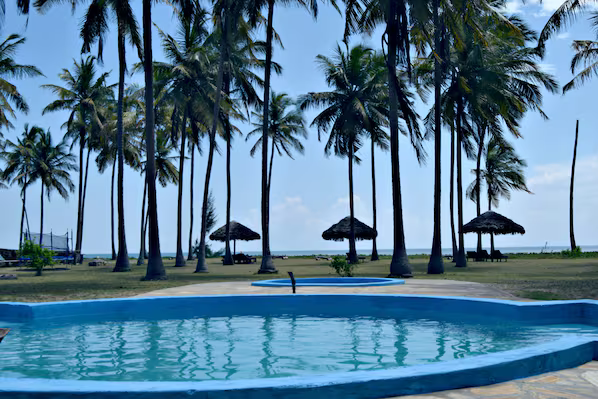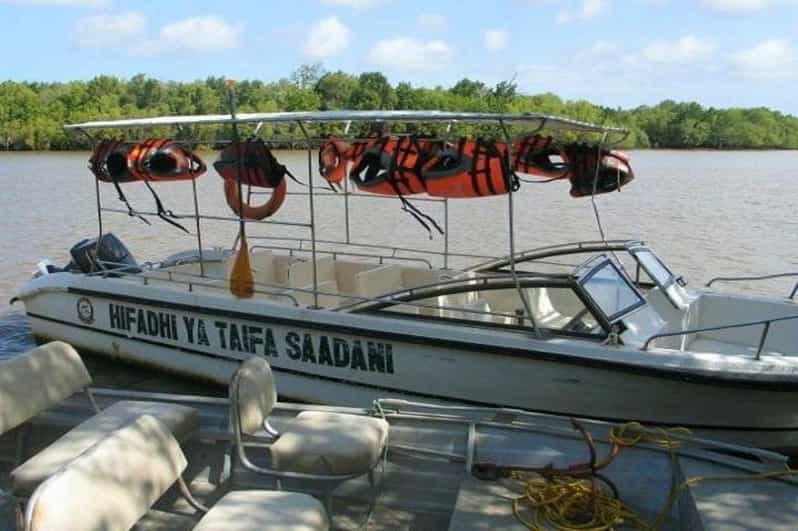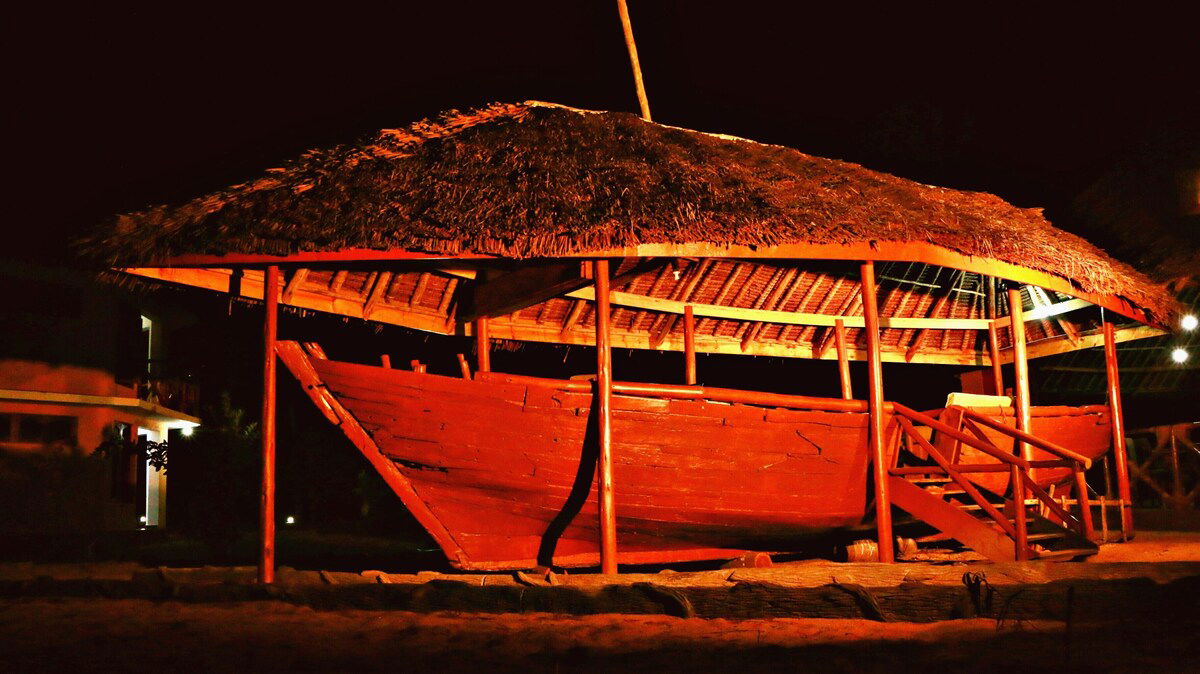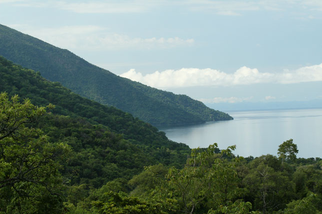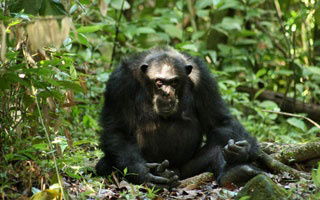Gallery
For centuries, the Maasai were nomadic pastoralists whose way of life depended on their livestock. Young warriors (Morans) marched in search of pasture, while protecting livestock and the community. The Ilkunono, a subgroup of the Maasai, were also known as skilled blacksmiths, making bells and weapons.
The Ngorongoro Conservation Area is located in northern Tanzania. It is home to the vast Ngorongoro volcanic crater and the “big 5” (elephant, lion, leopard, buffalo, rhino). Huge herds of wildebeest and zebra roam its plains during their annual migration. Livestock belonging to the semi-nomadic Maasai tribe graze alongside wild animals. Hominid fossils found in Olduvai Gorge date back millions of years.
The Selous Game Reserve is located in southern Tanzania; it covers an area of approximately 50,000 km2 and constitutes the largest wildlife reserve in Africa. The reserve owes its name to the Englishman Sir Frederick Selous, a famous conservationist and big game hunter. Due to its rich diversity and intact habitats, the Selous Game Reserve has been designated a heritage site UNESCO World Heritage Site in 1982. The game reserve is accessible by light aircraft from Zanzibar and Dar es Salaam; it is also accessible by road all year round. Selous is a place with varied terrain; it contains forests, grasslands, riverine sandbars, open plains, grass-covered swamps, and lowland forests. The mighty Rufiji River winds its way through the reserve; its tributaries and small lakes provide a source of water for wildlife and a beautiful environment to explore on a boat safari. The Rufiji River offers one of the best boat safari experiences in Africa. Selous is home to large herds of elephant, buffalo, hippo, crocodile, wildebeest, kudu, black antelope, hartebeest, eland and some of Tanzania's last black rhinos. Africa's top predators, such as lions, leopards, hyenas and the endangered African wild dog, roam freely inside the reserve. In fact, Selous is nicknamed the land of lions and leopards due to their large numbers. The lions inside the reserve are also particularly strong. More than 450 species of birds also inhabit the Selous Game Reserve. Inside the Selous Game Reserve, you will embark on boat safaris along the mighty Rufiji River, adventurous walking safaris and game drives; all activities are designed to give you the best of Tanzania's hidden gem: the Selous Game Reserve. Tucked away from the busy parks of northern Tanzania, Selous is truly an unspoiled gem of southern Tanzania. Popular Activities in Selous Game Reserve :Game Drives :Boat safaris :Safari on foot Selous is home to Africa’s best predators and big game. Observe the magnificent Selous on a boat safari along the Rufiji River. Go on adventurous walking safaris in Africa’s largest game reserve. For more information, you can contact us directly so that we can organize your trip according to your budget.
The park is located between Dar es Salaam (200 km, 4 hours) and Tanga (75 km, 3 hours) and borders the continental coast. Saadani National Park is home to a variable mix of marine and continental flora and wildlife. The vegetation of the park is quite unique and includes mangrove forests around the Winding Wami river and ocean, amazing palm trees, coral reefs in the Indian Ocean, short and the tall grass savannah and the harsh black cotton plains. In terms of wildlife, Saadani has sufficient populations of waterbuck, wildebeest, hartebeest, reedbucks, buffaloes and giraffes. Warthogs, baboons and colobus monkeys are often spo, while elephants, lions and leopards are rather shy. But even for birdwatchers, this place is truly awesome. A boat safari on the Wami River is a real highlight for any visitor. Hippos and huge crocodiles, malachites, magpies and even giant kingfishers can also be seen. Other common birds include woolly-necked stork, common sandpipers, lilac-breasted rollers, palm trees hazel vultures, fish eagles and ground hornbills Activities in Sadaani National Park include game drives, boat safaris and trekking safaris. accompanied by an armed ranger. Historical tours to the old fishing village of Saadani to see the remains of buildings that existed when this place was a bustling ivory and slave trading port, can also be an organization. Even cultural visits to the main ethnic tribes of the region (Waswahili, Wazigua and Wadoe) are proposed. Other ethnic groups from other regions also migrated to the region due to better business opportunities. Unlike other national parks in Tanzania, visitors can combine a safari with a relaxing beach. stay in Saadani National Park. The beaches are clean and lined with palm trees. The coast of Saadani is hot and humid and swimming is pleasant with the ocean’s temperatures usually reaching around 25°C. Maziwe reef can easily be reached by boat from anywhere along the Saadani coast. Saadani National Park caters to adventurous and luxury travelers as well as families. Accommodation on offer includes public campsites, luxury lodges and tented camps in and outside the national park.
Only a few visitors who travel in Africa ever breach to Katavi, perhaps the most inaccessible and unspoiled wildlife haven to visit on an untouched tour of Tanzania with AfricanMecca. It takes 3- 4 hours of flight time from Arusha or at least 24 hours of uncomfortable driving to where, deep in virgin territory, spectacular numbers of Cape buffalo, giraffes, antelopes and zebras dodge predatory lions, leopard, cheetah, hyena, wild dogs and jackals. The park is dramatically changeable: peaceful, floriferous and lush, with colorful butterflies and speckled birds in the rains, but harsh and violent as water becomes scarce for the hundreds of battling crocs and hippos that vie for a spot in a muddy wallow. Equally remote western national parks, only accessible by air and boat, Mahale and Gombe lie on the coast of Lake Tanganyika. Best known for their chimpanzee communities, they offer different and alternate primate safari experiences in Tanzania. At Gombe, Jane Goodall spent 50 years studying the Kasakela chimps, discovering their social hierarchy and their intelligent use of tools. Visitors may observe their interactions on structured chimpanzee tours of Gombe, where, to protect both people and chimps, they are allowed one hour’s observation after an uncertain forest trek to find them. For the remainder of your lake tour in Gombe, there are delightful beaches, boat trips on the fabulous Tanganyika and snorkeling amongst the hundreds of brilliant cichlid fish species just offshore. At Mahale, the terrain is more rugged and abundant, the chimpanzees and other primates more numerous if less habituated. A chimp trip to Mahale affords ample time to enjoy the glorious silver sand beaches and unforgettable beauty of Tanganyika, the oldest and largest freshwater lake by volume in all Africa. https://www.theafricaspecialists.com/sites/default/files/styles/1920x1200adaptive/public/slideshow-pics/mahale4.jpg?itok=IAGOqg4D&slideshow=true&slideshowAuto=true&slideshowSpeed=5000&speed=350&transition=elastic
